12 Things to Do in Kastoria, a Hidden Gem in Northern Greece
18 min readAll the best things to do in Kastoria, Greece – from Byzantine churches and Ottoman mansions to cycling around the...
All the best things to do in Kastoria, Greece – from Byzantine churches and Ottoman mansions to cycling around the tranquil Lake Orestiada.
I first came across Kastoria when I was searching for a place to break the journey overland between Thessaloniki and Albania.
I chose the small city for its lakeside location and cute houses – little did I know that Kastoria was once one of the biggest cities in the region, or that it held such historical and cultural importance.
Kastoria is definitely on the quiet side – it is not a bustling city by any means, especially in the shoulder season. Despite this, we soon found there was much more to do in Kastoria than we had anticipated. We loved it so much, we ended up extending our stay to three nights.
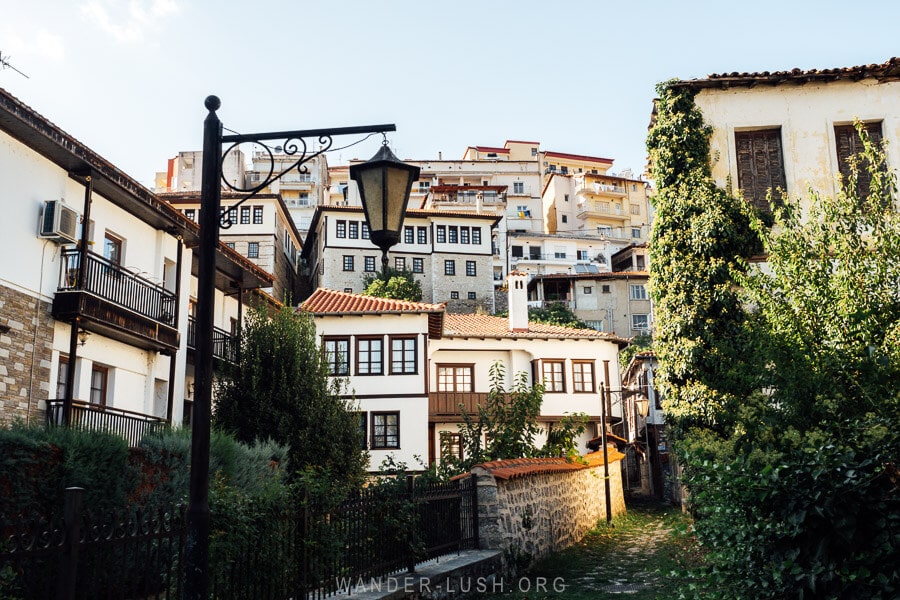
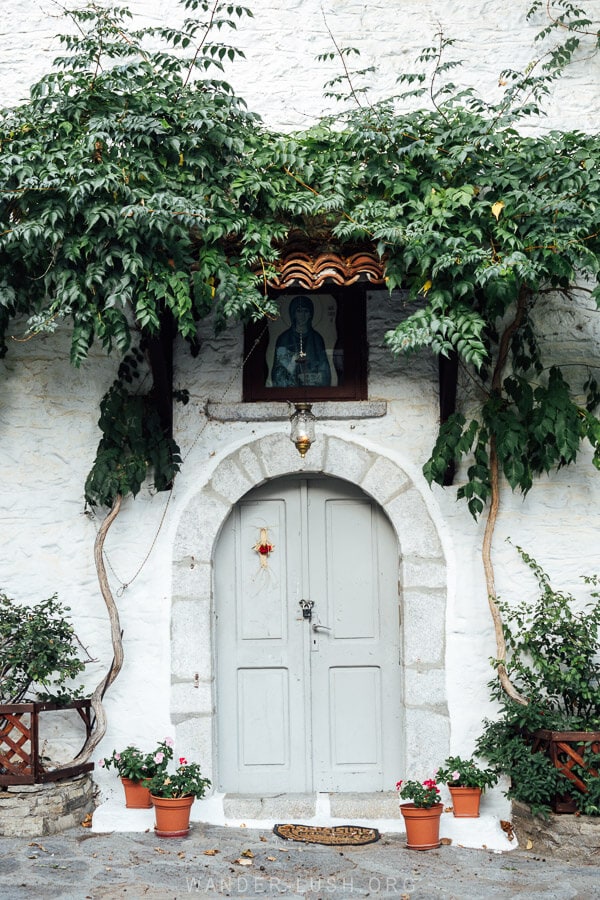
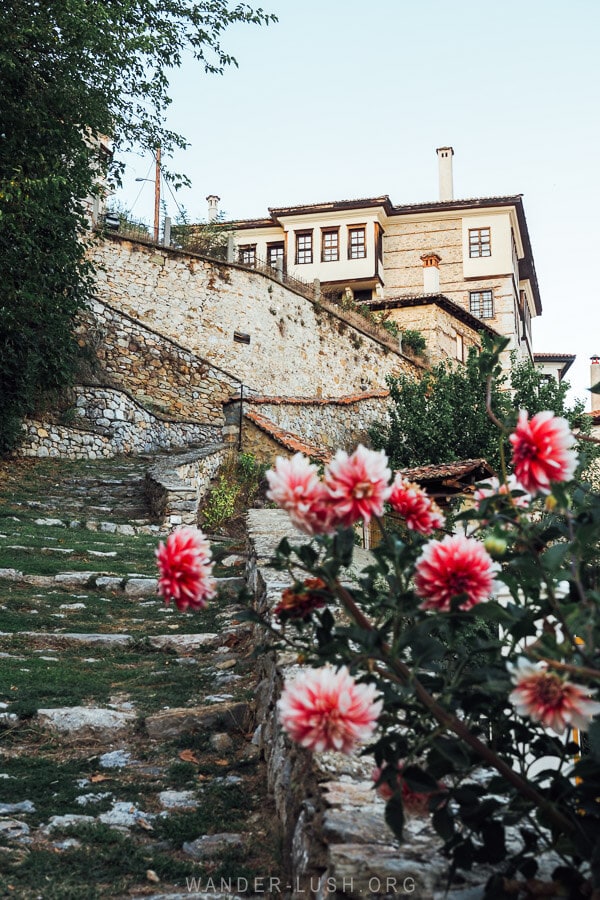
Just 2.5 hours from Thessaloniki by bus, an hour from Korca in Albania and 2 hours from Bitola in North Macedonia by road, Kastoria is perfectly positioned for a city break or a Greece-Balkans stopover.
Alternatively, if you’re driving around Greece, Kastoria would be a welcome addition to any road trip itinerary through the north.
In this guide I will show you all the best things to see and do in Kastoria, where to eat, and how to get around.
Please note: This post contains affiliate links, meaning I may earn a commission if you make a purchase by clicking a link (at no extra cost to you). Learn more.
Kastoria essentials
- Where I stayed in Kastoria: Venetoula’s Mansion B&B (boutique hotel in historic Kastoria) & Keletron Hotel (budget-friendly option near the bus station).
- ESIM for Greece: I used an Airalo eSIM on this trip. I opted for the 5 GB deal, which was plenty of data for a few days in Thessaloniki and Kastoria.
- Travel insurance for Greece: I have been using HeyMondo for over a year now and am satisfied with their pricing and support. Use my link to save 5% off your policy.
- Hiring a car in Greece: If you are thinking of hiring a car and driving around the north of Greece, I recommend using Local Rent to find a deal. Prices are excellent and there is a good selection of vehicles available.
Why visit Kastoria?
Kastoria is a small, charming city that could easily be described as a hidden gem in Greece. Located west of Thessaloniki, close to the Albanian border, it is very easy to reach using public transport yet it is not saturated with tourists at all.
The city’s location on a promontory over Lake Orestiada can only be described as stunning, especially in the autumn months when the fall colours come into their own. We visited in early October and had perfect conditions.
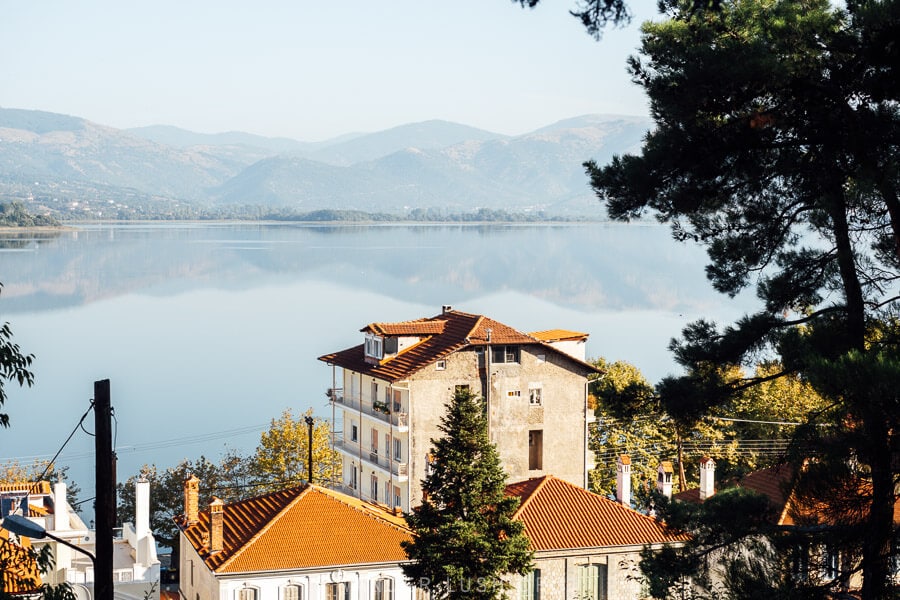
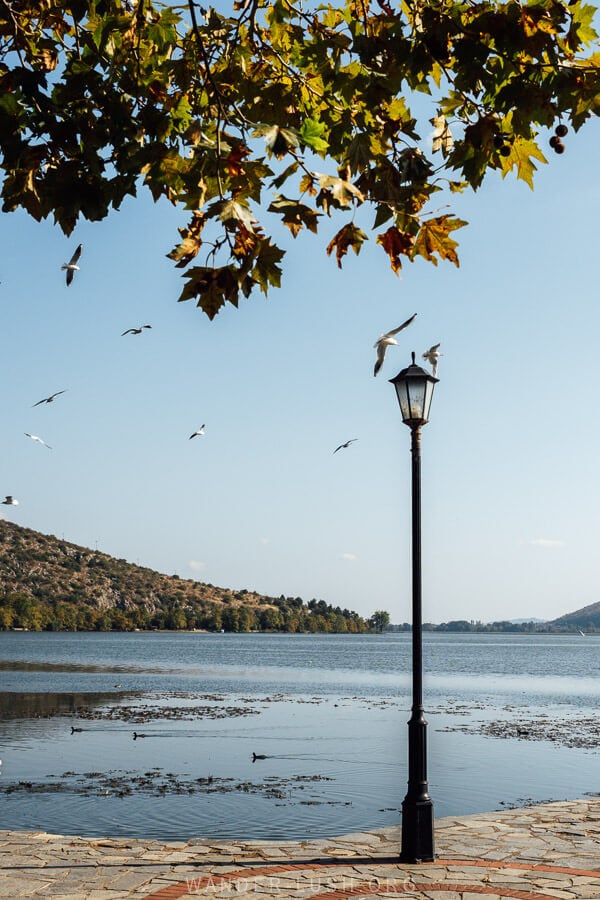
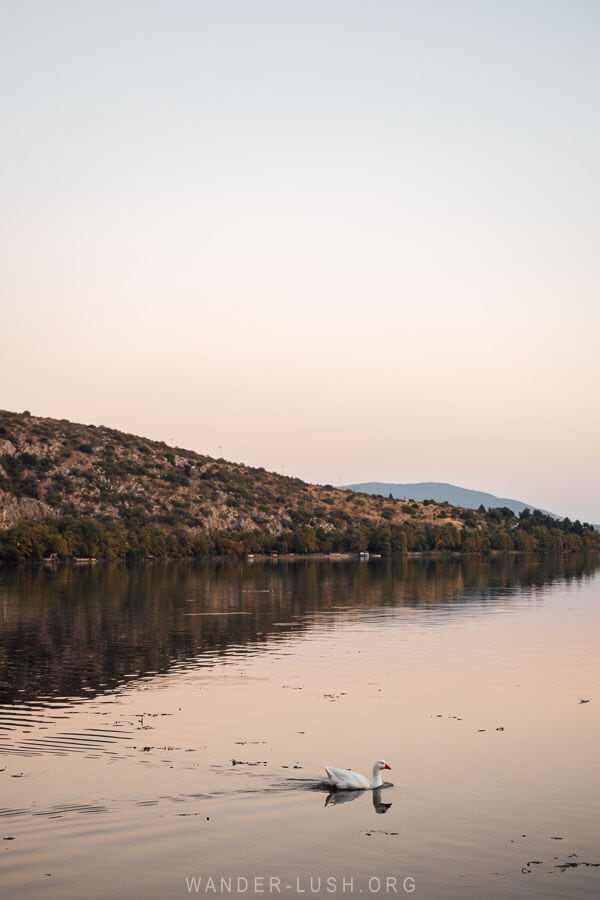
Kastoria is famed for its Byzantine churches and Ottoman ‘archondika’ houses. If you’re a fan of history, architecture, religious iconography or all of the above, then you will find Kastoria fascinating – particularly in respect to how the city is a bridge between the Balkans and the rest of Greece/Europe.
Similarly, if you are content walking down alleyways and practising your street photography, then Kastoria will feel like paradise. There are dozens of individual neighbourhoods and hundreds of quaint, photogenic houses in Kastoria.
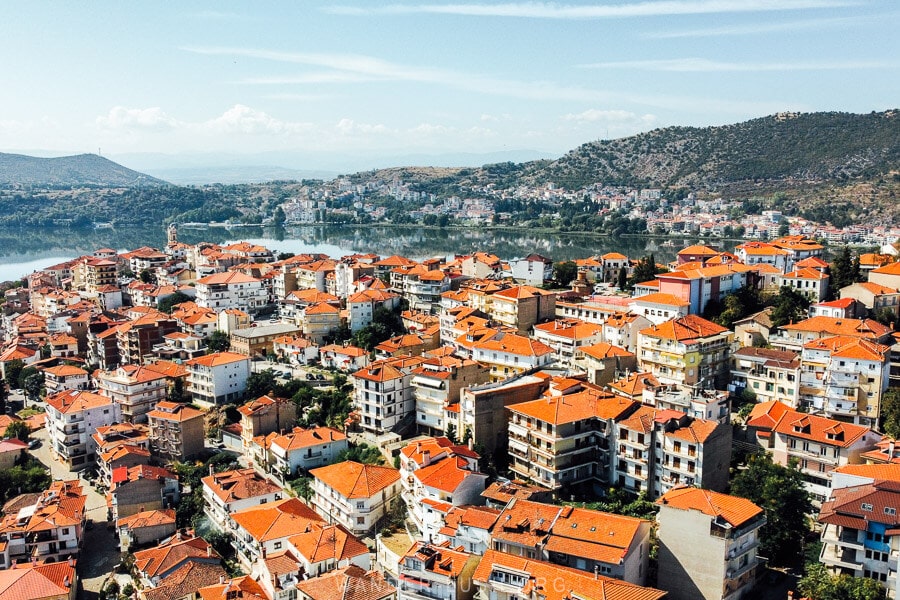
Mixed with the cool, contemporary Greek architecture you also see in Thessaloniki, hand-painted shop signs and old-school coffee shops (with a few abandoned buildings and urbexing opportunities thrown in), Kastoria is an excellent place to spend a few days.
How to get to Kastoria
The easiest way to get to Kastoria is by bus from Thessaloniki. Tickets cost 17.60 Euros at the time of our trip, and the journey time is 2.5 hours.
This route is operated by KTEL Makedonia. Buses depart from Macedonia Intercity Bus Station, which is also the terminus for the Thessaloniki airport bus 01N/X.
Buses run 7 days a week, with 2-7 departures between 9am and 9.30pm depending on the day. Double-check times and fares here on the website.
We went straight to the station from the airport and bought our tickets an hour before the bus was scheduled to depart (the bus wasn’t even half full). You can purchase tickets online, but note that you have to exchange your electronic voucher for a paper ticket before you can board.
Ticket desks are located inside the terminal building. The bus departs from the big rotunda-shaped area at platform 21. Free luggage storage and WIFI are available on board.
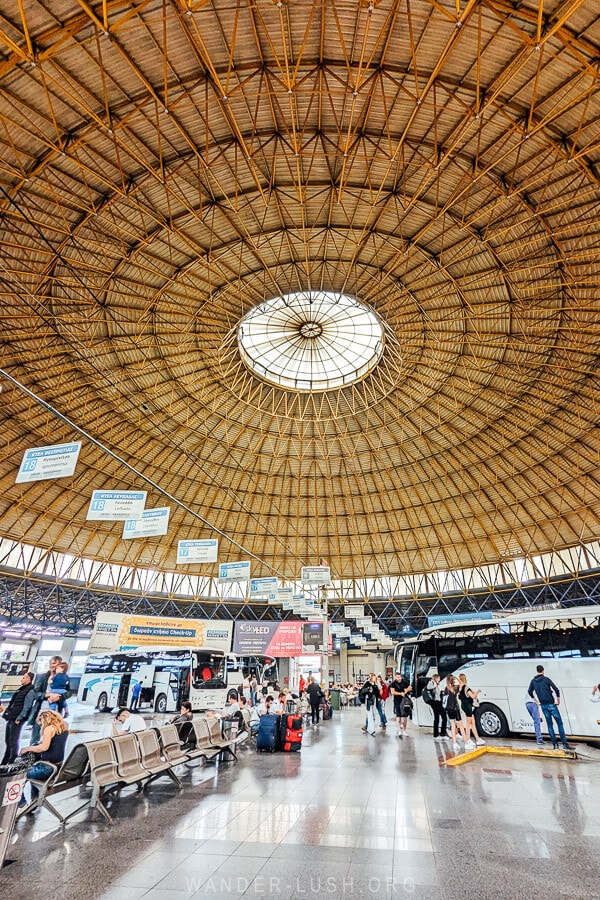
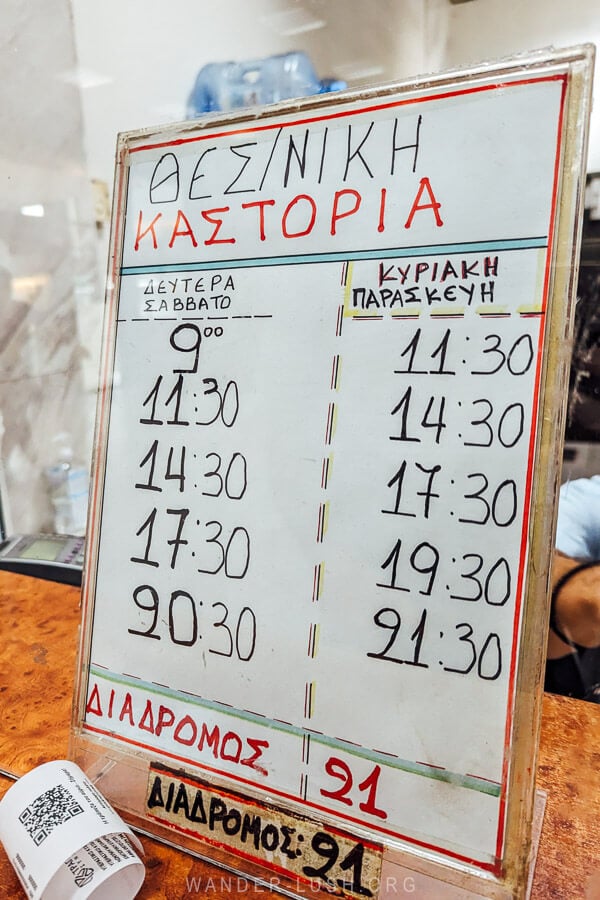
In Kastoria, buses terminate near Olimpiakis Park. We were able to walk to our accommodation from here – otherwise you can connect to a city bus at this bus stop.
Kastoria’s informal bus station is situated off the same park at this address. More about onward travel from Kastoria later.
Where to stay in Kastoria
Kastoria has some truly special boutique accommodations. If you’re travelling in the autumn or springtime, you might be able to find a good deal.
We spent our first two nights in Kastoria at Venetula’s Mansion B&B. It was extremely cosy and comfortable with incredible panoramic views from the terrace (pictured below) and a satisfying breakfast.
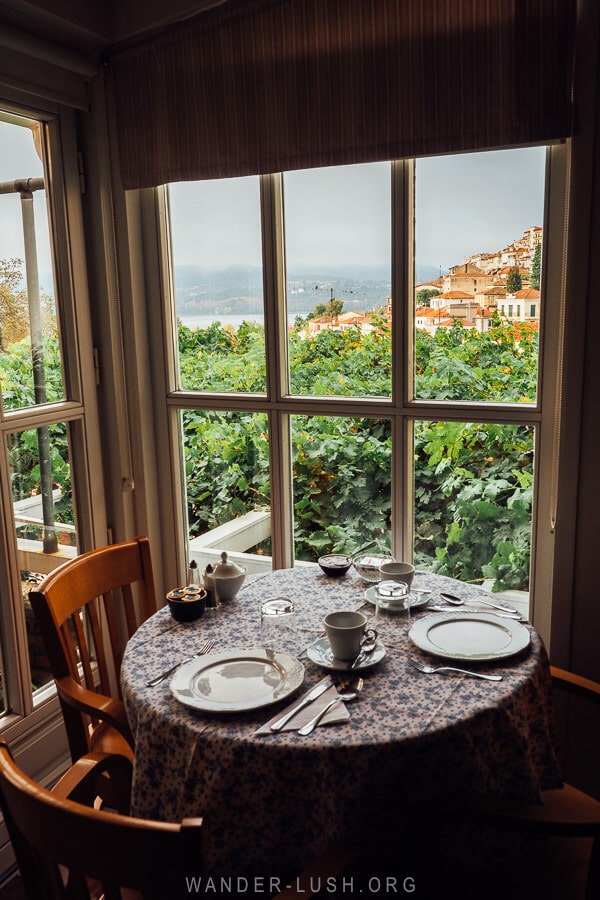
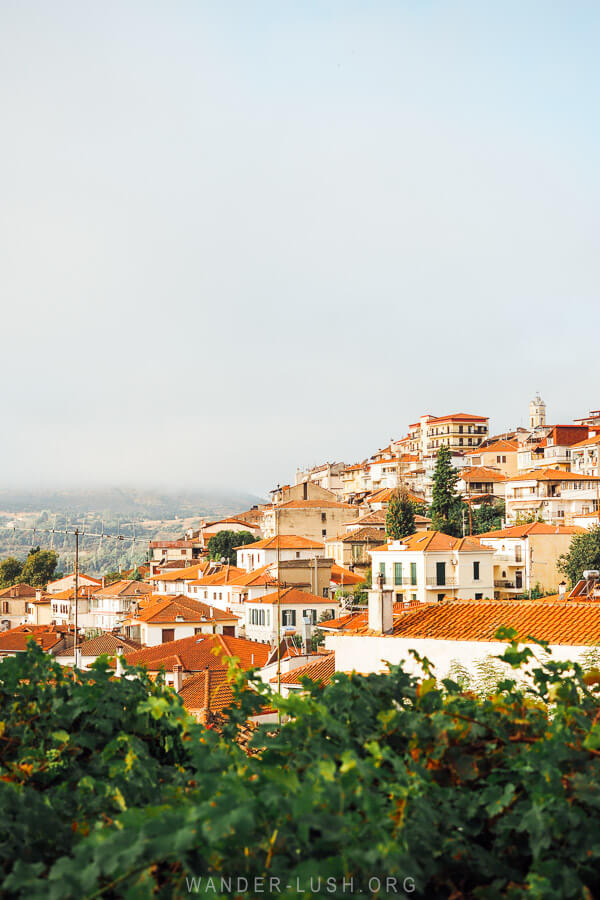
Vergoula’s Mansion is another popular choice. Located inside a refurbished Ottoman house, it has slightly bigger rooms (and bathrooms) and a similarly beautiful aspect over the peninsula.
When we decided to spend an extra night in Kastoria, we opted for something a bit more budget-friendly and closer to the bus station. We chose Keletron Hotel, an old-school hotel in the new part of the city. It was a bit dated but comfortable enough. The location is great, and the city views from our window were a nice surprise.
Kastoria map
Click here to open a map of Kastoria on Google Maps, featuring all the below mentioned attractions, restaurants and other helpful locations.
12 things to do in Kastoria
1. Wander the historic Ntoltso & Apozari Quarters
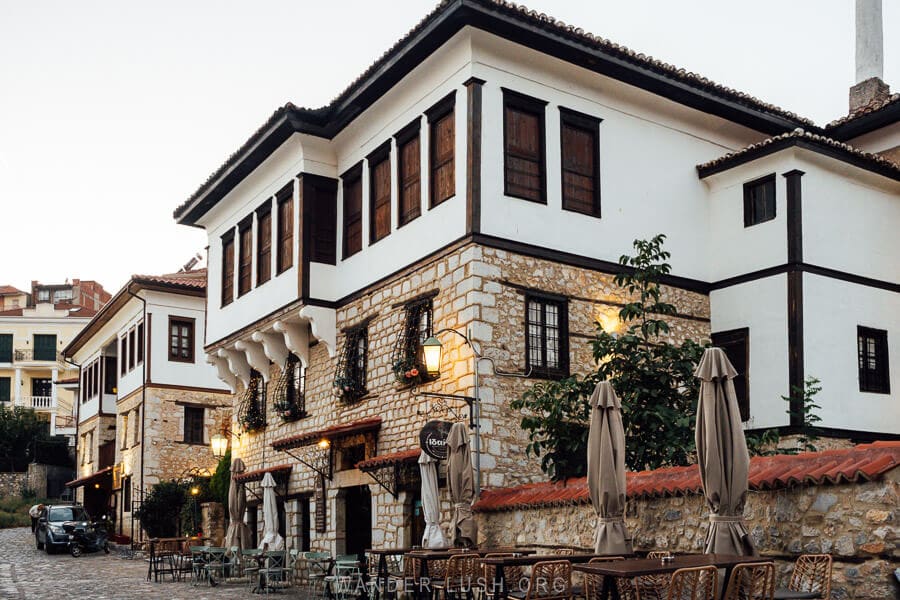
One of Kastoria’s defining features is its suburban quarters. In the past, the city was carved up into different neighbourhoods with certain religious, ethnic and social groups gravitating towards specific parts of the city.
Historic Ntoltso or Doltso (on the south-eastern side of the peninsula) and Apozari (on the north-eastern side of the peninsula) are two of the oldest parts of Kastoria that emerged when locals were evicted from the citadel. Here, you can still find incredible examples of heritage architecture and city planning.
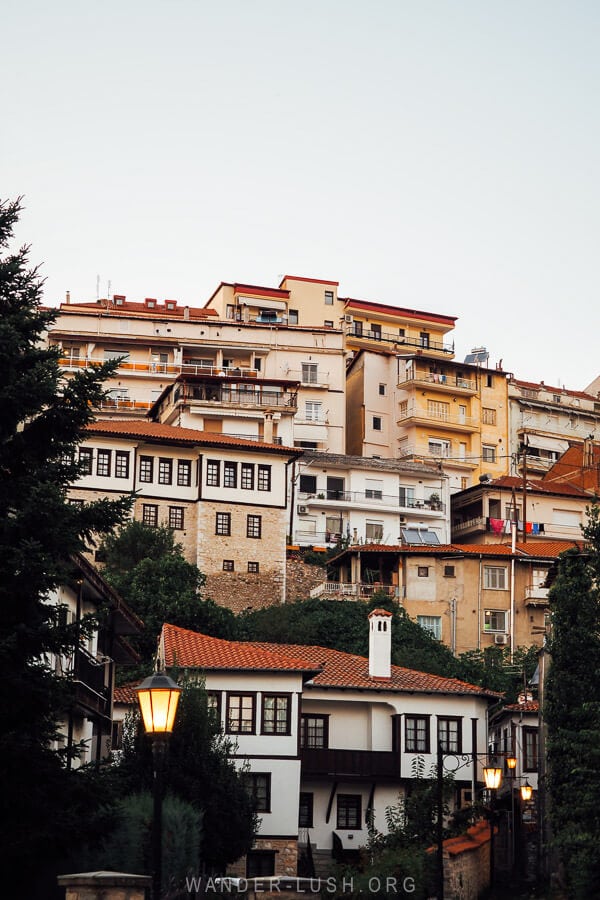
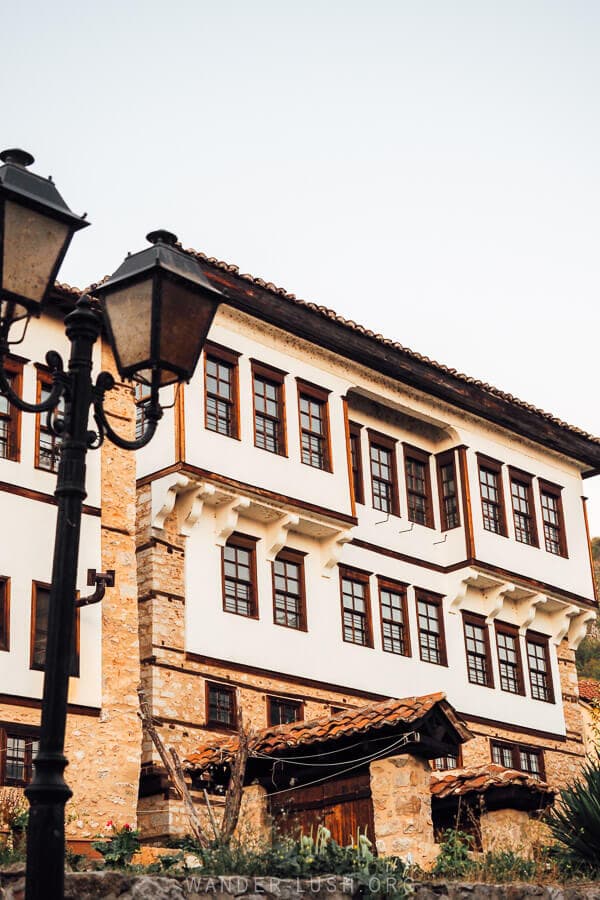
Many of the buildings date back to the 17th century when Kastoria was conquered by the Ottomans. As Jewish, Turkish and Bulgarian families came to settle, they built residences (and churches) that incorporated different architectural styles.
Kastoria Municipality has created a printed map with half a dozen thematic guided walking routes through the different quarters. We got our copy from our hotel. You can also find maps and information boards dotted around the place to help you find your way.
As is my usual style, I preferred to just follow my nose and get lost down the sidestreets. Most of the roads are cobbled and some quickly turn from flat alleyways to vertiginous staircases. You never know what is waiting for you around the corner.
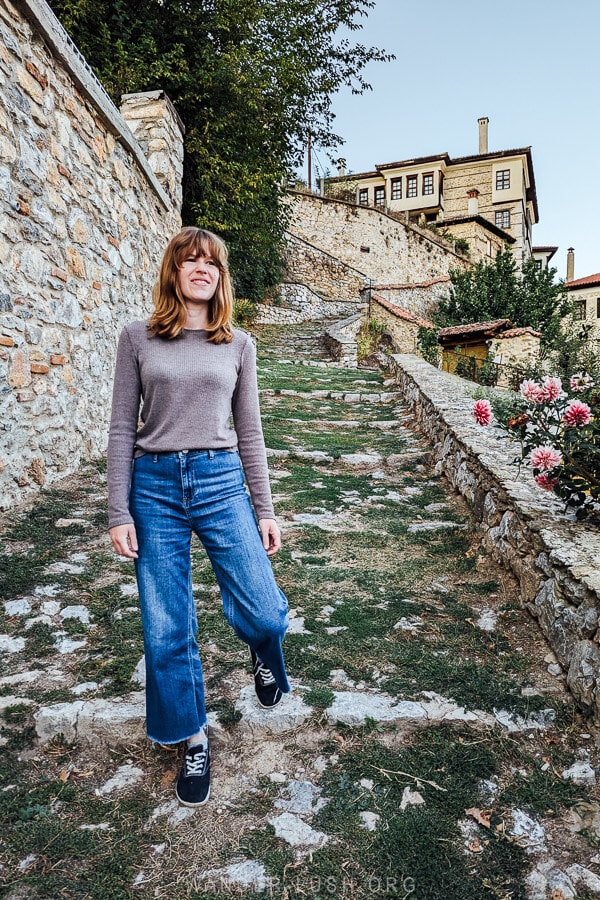
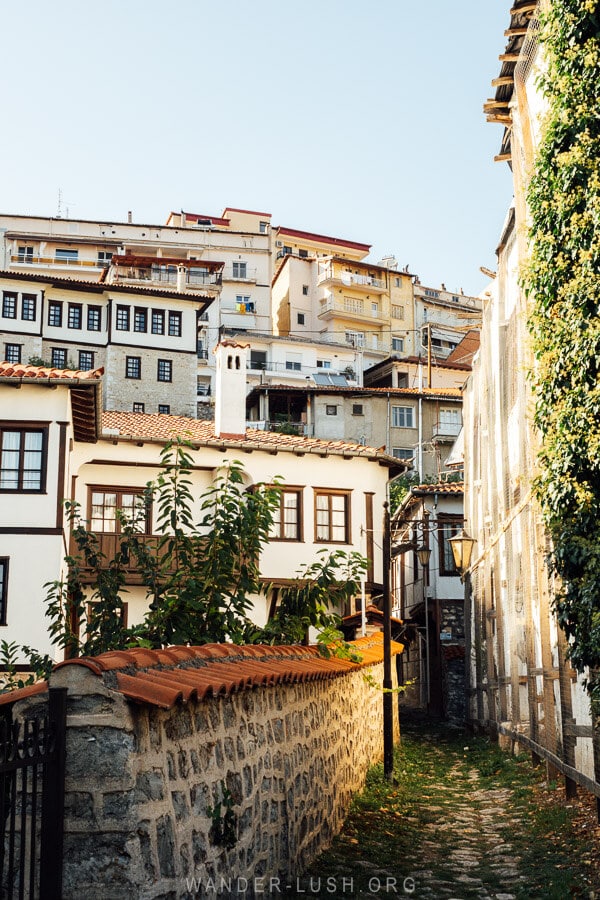
Doltso Quarter was my favourite area. I kept coming back to photograph the houses there at different times of day. There are two excellent photo spots here, the laneway on Tsakalov Street and the stairs off Patr. Gennadiou Street (pictured above – find them marked on my Kastoria map above).
2. Admire the incredible Ottoman architecture
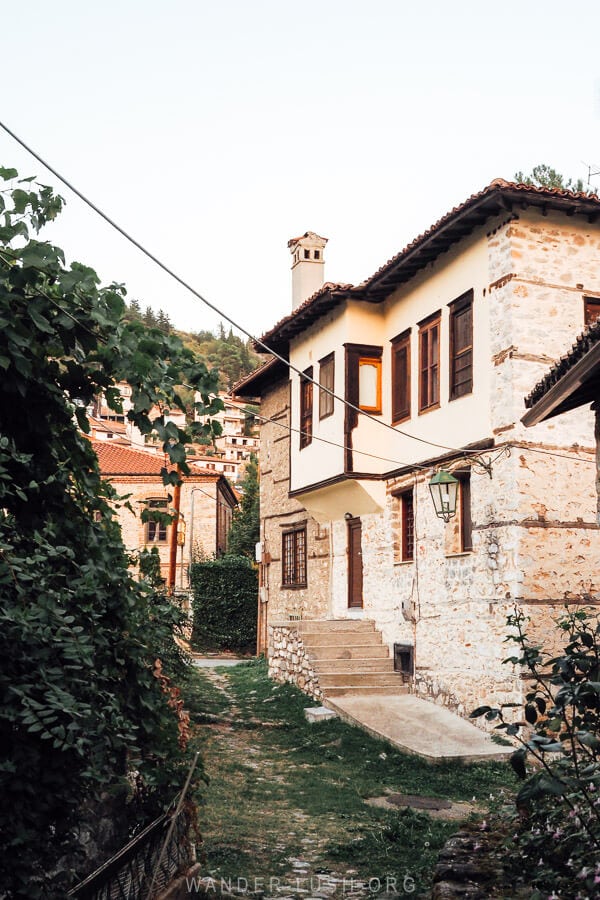
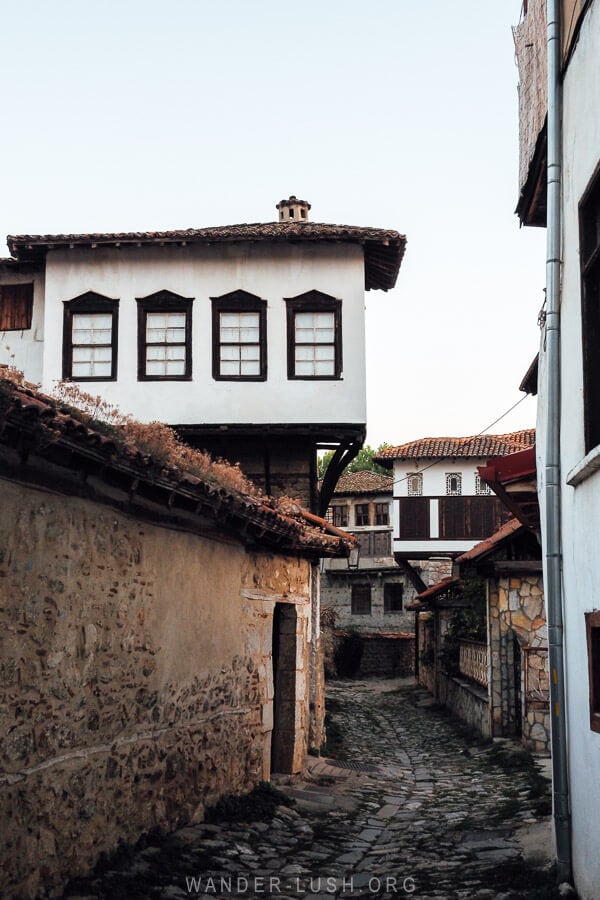
Kastoria’s elegant archondika houses can be found in every neighbourhood and are among the most eye-catching features of the urban landscape. They date from the 17th century and were built by wealthy merchants and artisans connected to Kastoria’s fur trade (more on that later).
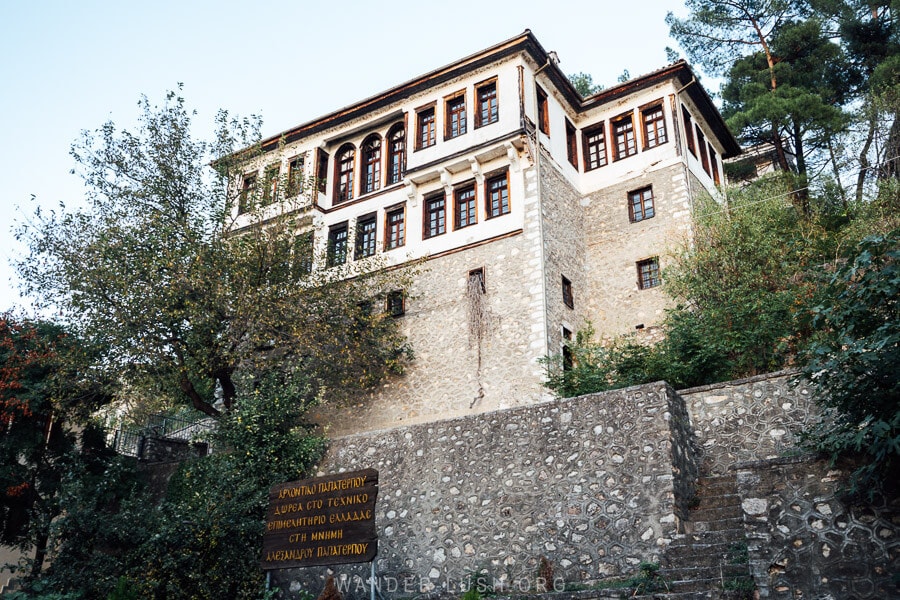
I immediately recognised this style of architecture from my time travelling around the Balkans. The manor houses reminded me especially of buildings in Plovdiv, Bulgaria – such as the beautiful Hindliyan House – and in Gjirokaster in Albania.
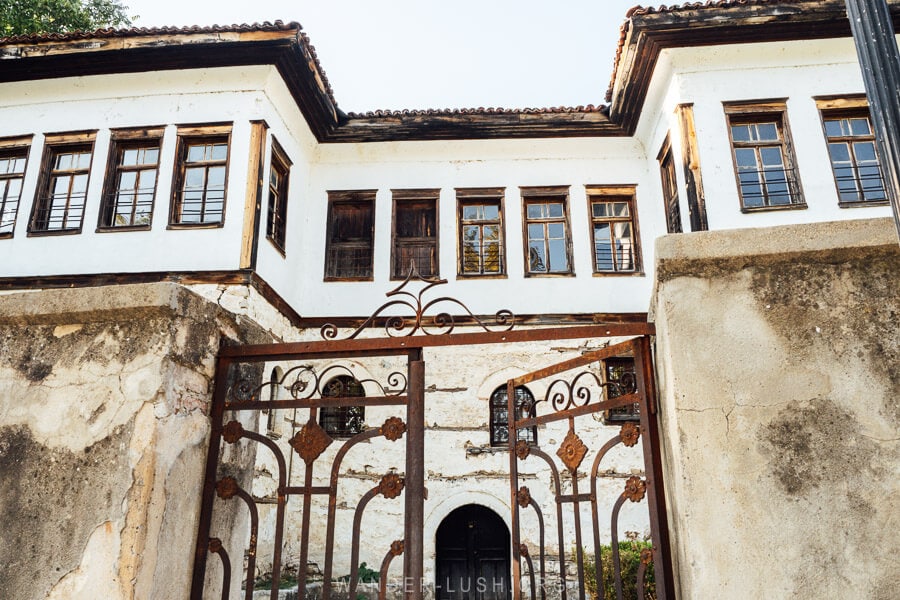
The most significant archondika are signposted with brown plaques. Some are in a state of disrepair, while others have been restored.
Here are my favourites to look out for:
- Papaterpou Mansion
- Skoutaris Mansion
- Mitousis Mansion
- Sapoudzis Mansion
- Athanasios Christopoulos Mansion
- Ioannis D. Aivazis Mansion
- Leonidas and Menelaos Batrinos Mansion
- Natzis Th. Mansion
Only a handful of these mansions are open to the public today – see below for more details.
3. Step inside the restored Tsiatsiapas Mansion
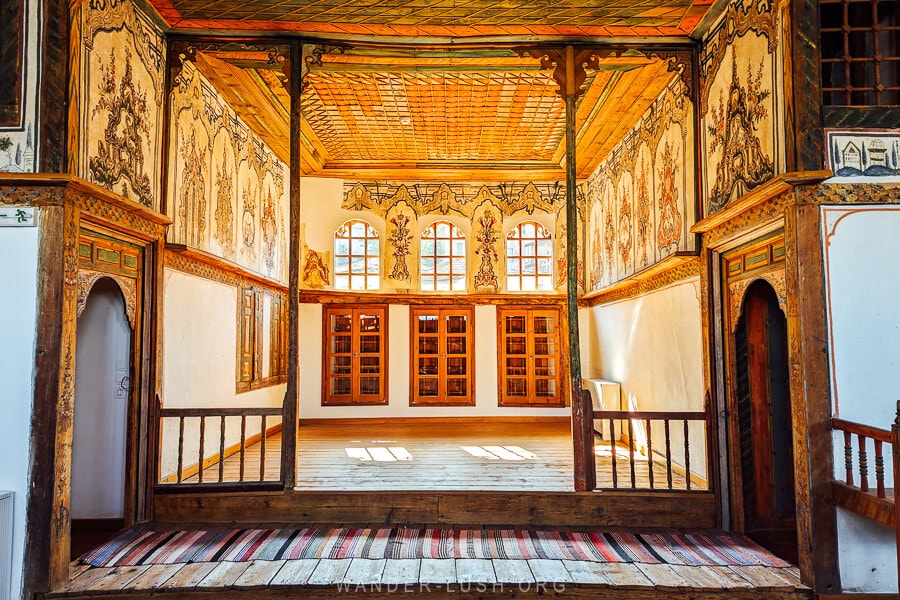
Located on the waterfront in Apozari, Tsiatsiapas Mansion is the biggest (and one of the oldest) Ottoman-style houses in Kastoria. A few years ago it was renovated and opened to the public as a house museum.
This is your chance to see what the archondika houses would have looked like in their heyday. This is an unmissable attraction in Kastoria.
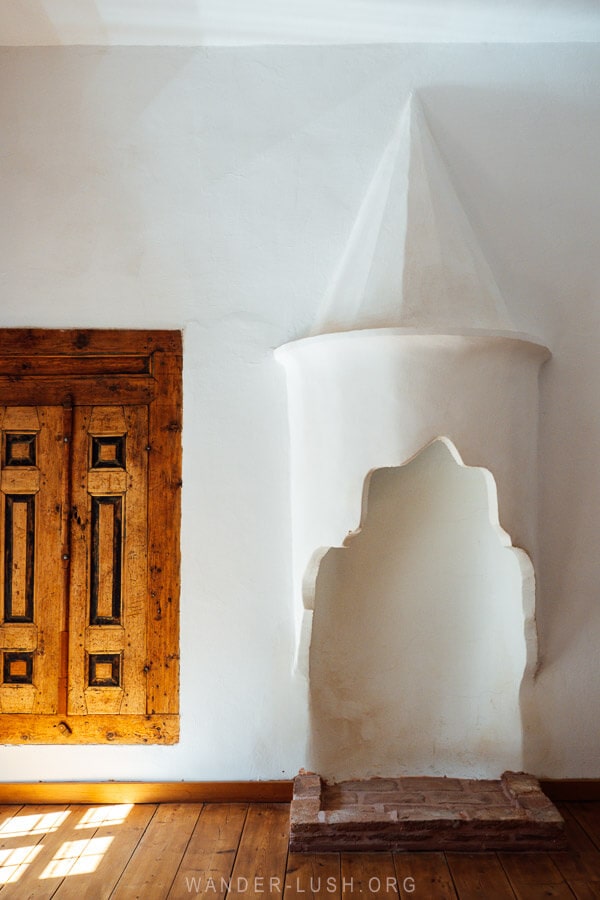
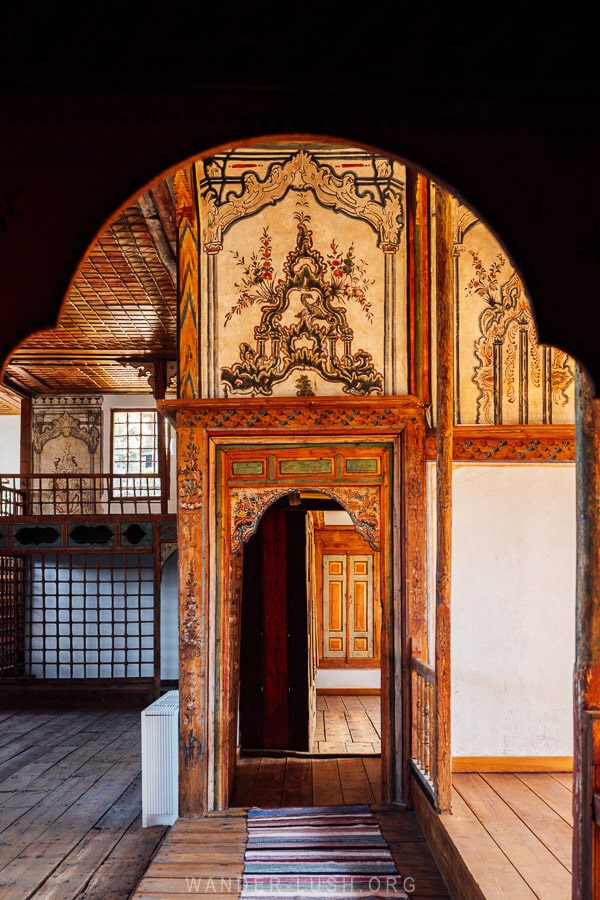
Tsiatsiapas Mansion was built in the mid-18th century for a wealthy furrier. He bequeathed the house to his three daughters, but when they left Greece, two different families took up residence in the three-storey building. They did a great service by preserving the intricate paintings and woodwork on the top floor (incredibly, most of what we see today is original).
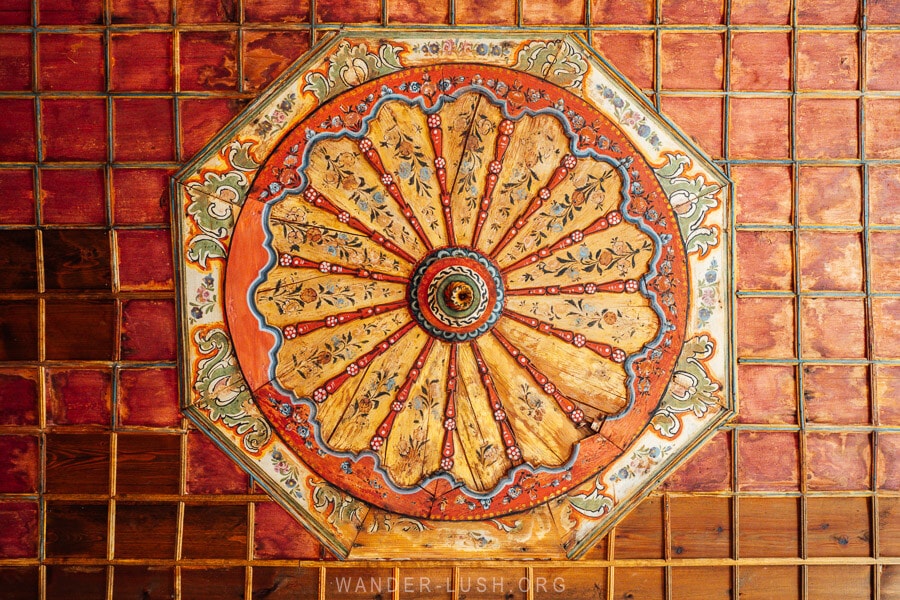
The vivid designs remind me of the Sheki Khan’s Palace in Azerbaijan and the many house museums in Berat and other Ottoman-influenced parts of Albania. Many of the murals are nautical themed, and at least one of them clearly depicts the city of Kastoria.
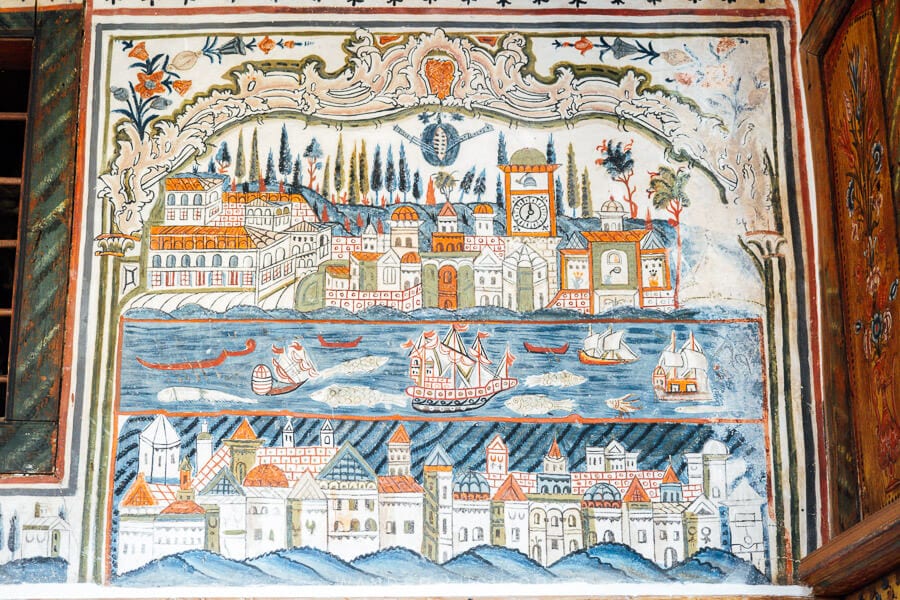
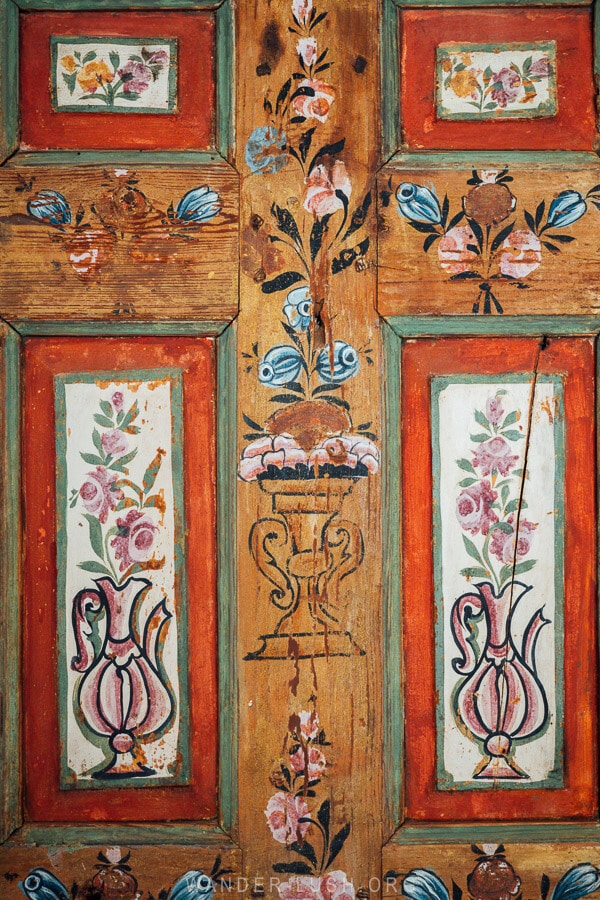
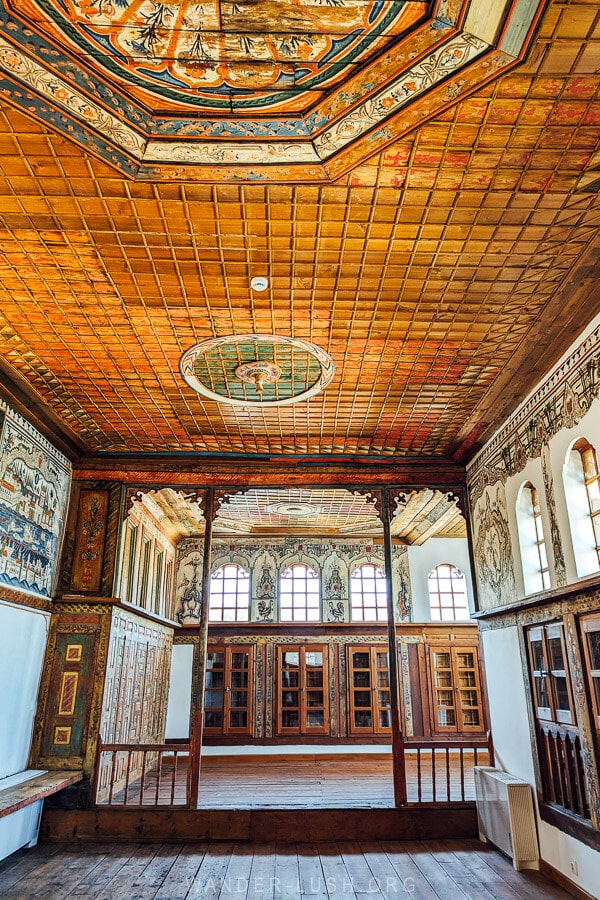
The first two levels of the house display a collection of miniature models of different dwellings, churches and landmarks around the city.
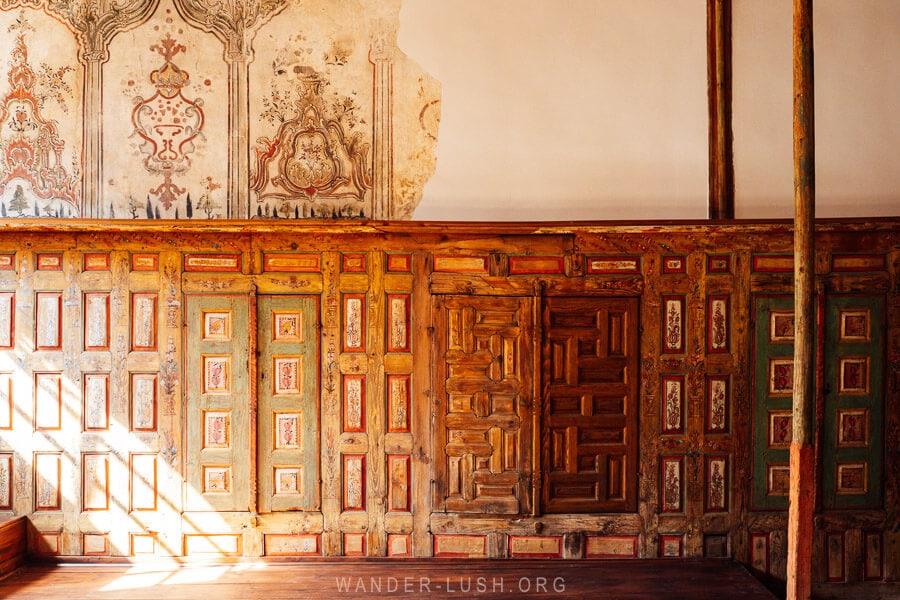
I also wanted to visit the Museum of Costumes inside Emmanuel Mansion in Doltso Quarter, but strangely it is only open on Sundays. The Folklore Museum of Kastoria inside Nerantzis Aivazis Mansion contains period furniture and is also quite interesting, but the decorations at Tsiatsiapas Mansion are much more impressive in my opinion.
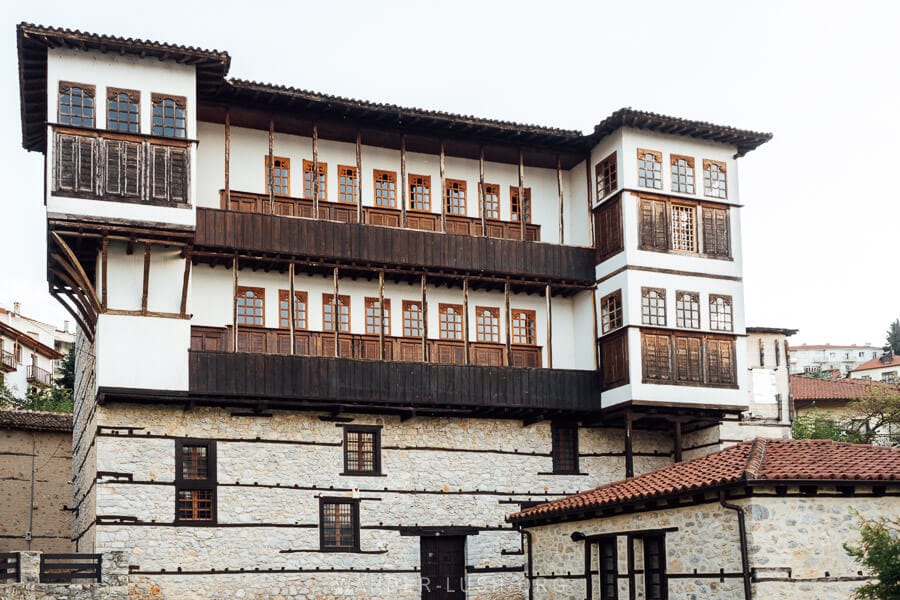
- Info: The Tsiatsiapas Mansion Museum is open from 8.30am until 3.30pm Wednesday to Monday. Entrance costs 3 Euros (correct change preferred, or you can pay with card).
4. Count Kastoria’s Byzantine churches
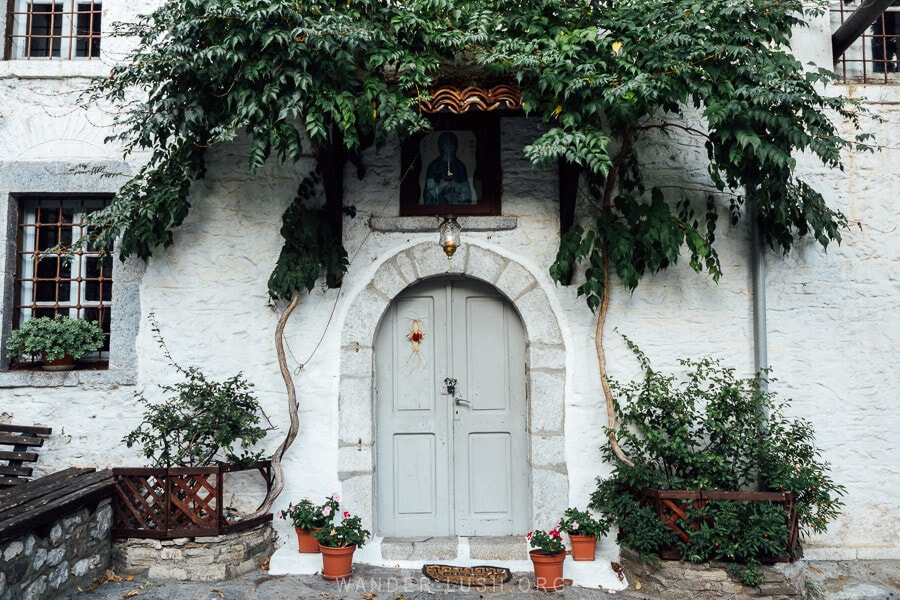
For a city of its size, Kastoria has a lot of churches. Some of them are located in prominent locations, such as the 11th-century Holy Church of the Virgin Mary Koubelidiki, but many are hidden away down side streets and squished between houses. This clandestine building strategy apparently helped the churches withstand Kastoria’s Ottoman occupation.
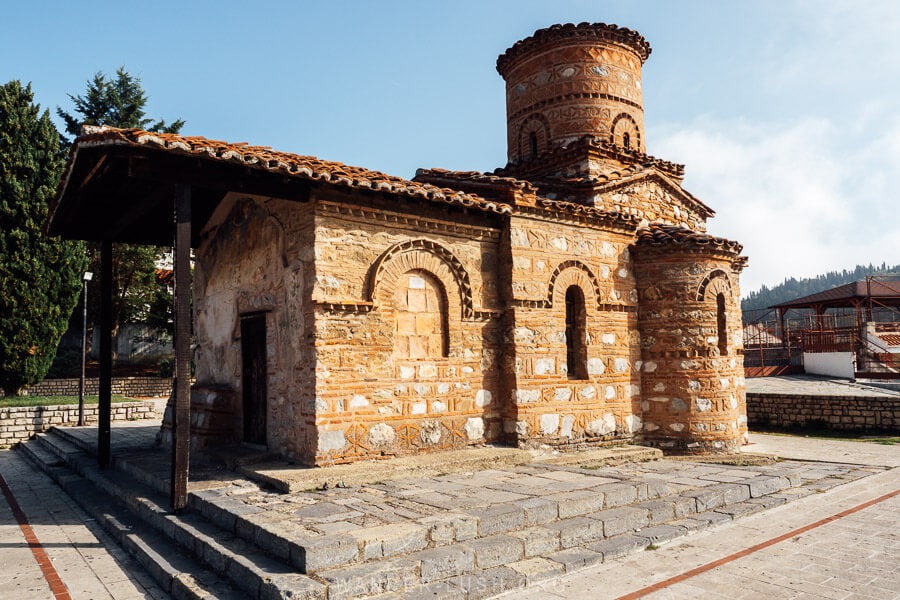
Like the mansion houses, Kastoria’s churches were a manifestation of wealth and prestige. Though humble from the outside, the brick chapels all have a resplendent frescoed interior. Many are dedicated to Saint Nicholas, the patron saint of sailors and merchants, which underscores the importance of Lake Orestiada to the city’s economy.
The oldest churches in Kastoria date to the 10th century. In subsequent years, merchants, aristocrats, bishops and monks alike from near and far sponsored the reconstruction of older churches and the creation of new chapels.
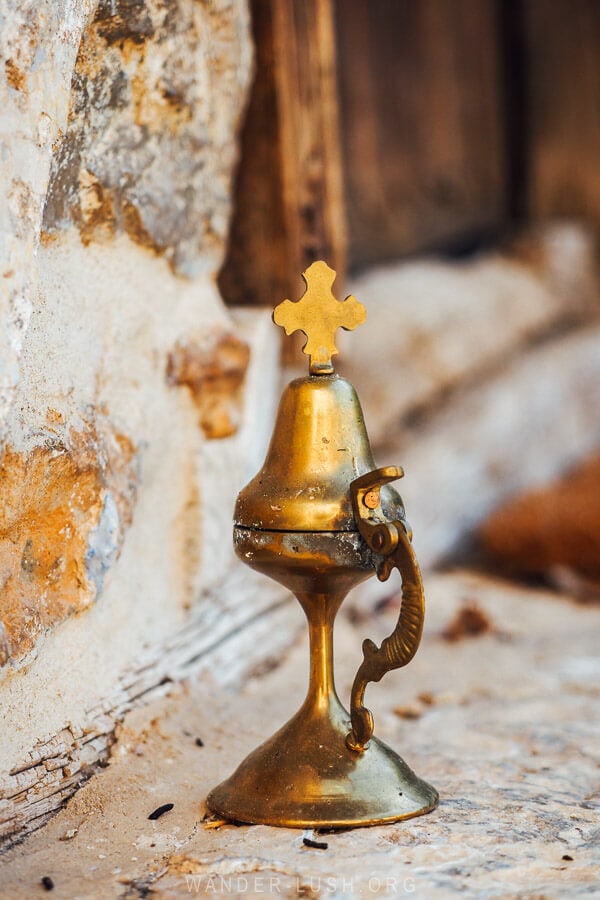
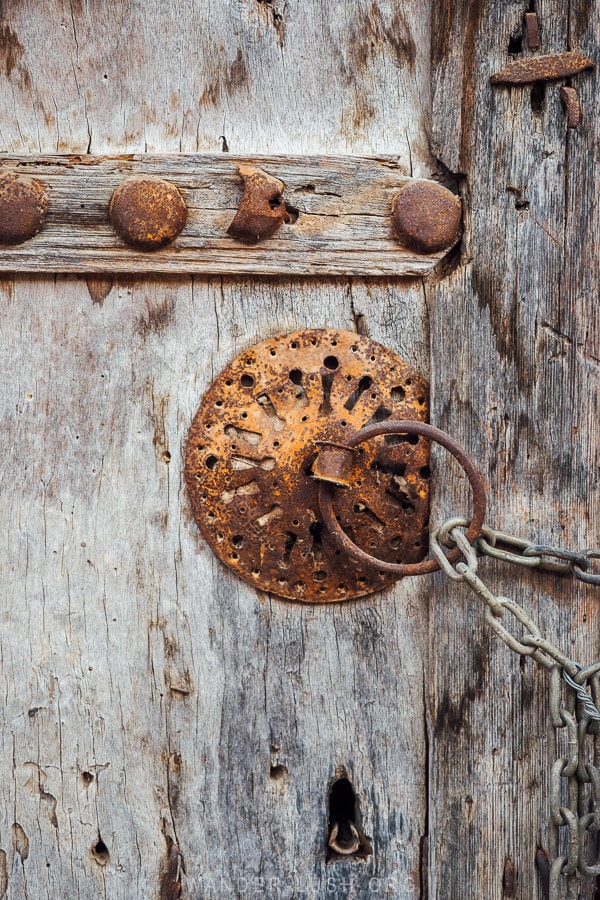
Of the 72 Byzantine and medieval churches that were built in Kastoria, 54 still exist today. All of them are kept under lock and key so in most instances, you will be restricted to admiring the exterior (although it is possible to visit certain churches – see the next section).
That’s OK, because most feature fresco paintings on the outside. The 10th-century Holy Church of the Taxiarch of the Metropolis is a good example: It has vivid frescoes on two of its exterior walls. Inside the church are the remains of Pavlos Melas, a hero of the Macedonian Struggle whose bust is also displayed nearby.
Nearby, the 19th-century Holy Metropolitan Church of the Dormition of the Virgin Mary is a contemporary cathedral that is worth visiting for its 19-metre-tall bell tower.
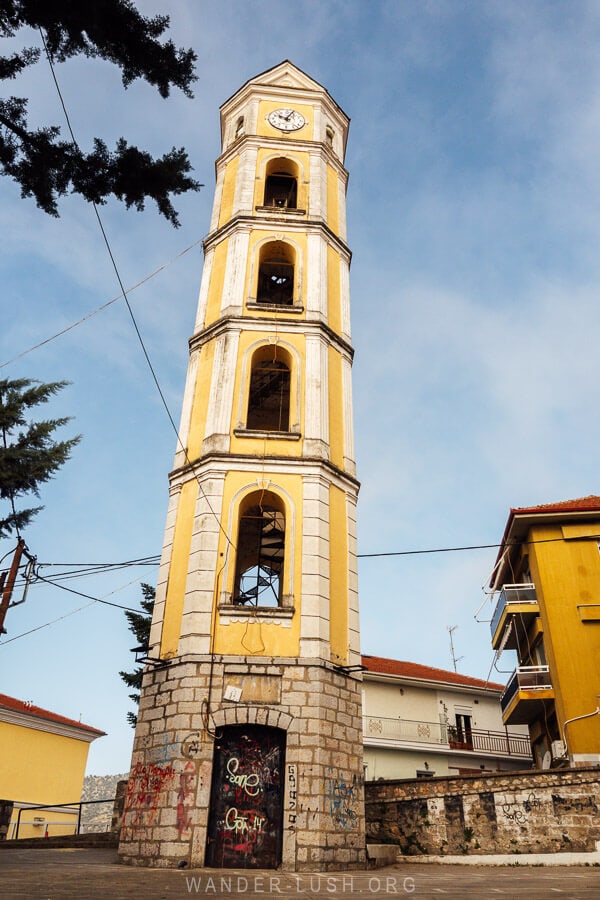
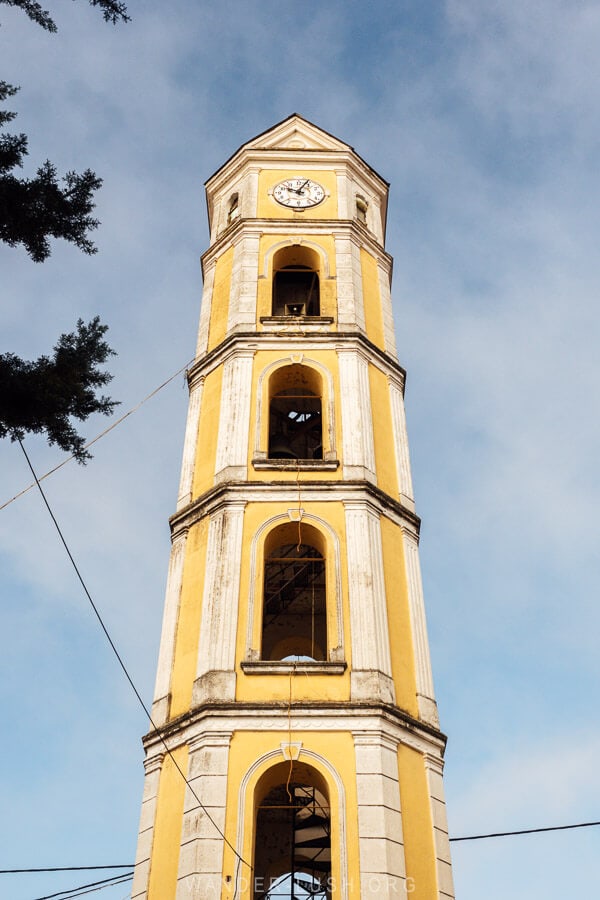
Another of my favourites is the 19th-century Holy Church of Saint Paraskevi of Dragota, a humble whitewashed church with an arched green door draped in foliage (pictured above).
Located within Doltso in the Greek neighbourhood of Dragota, it was built in 1899, making it the last church built under Ottoman rule. Triangular in shape and surrounded by houses on all sides, it is a great example of how churches were snuggled amongst the houses for protection.
5. Venture in to see the original frescoes
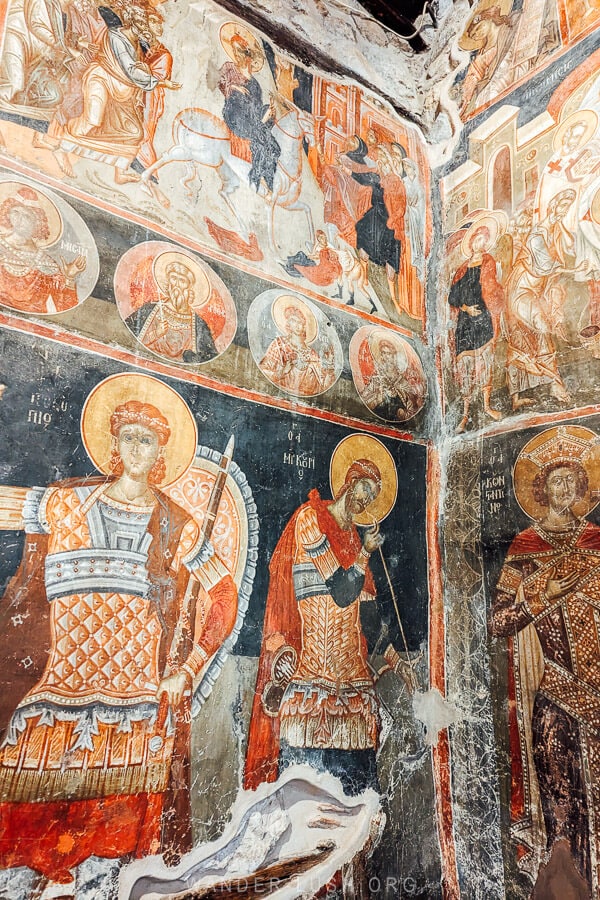
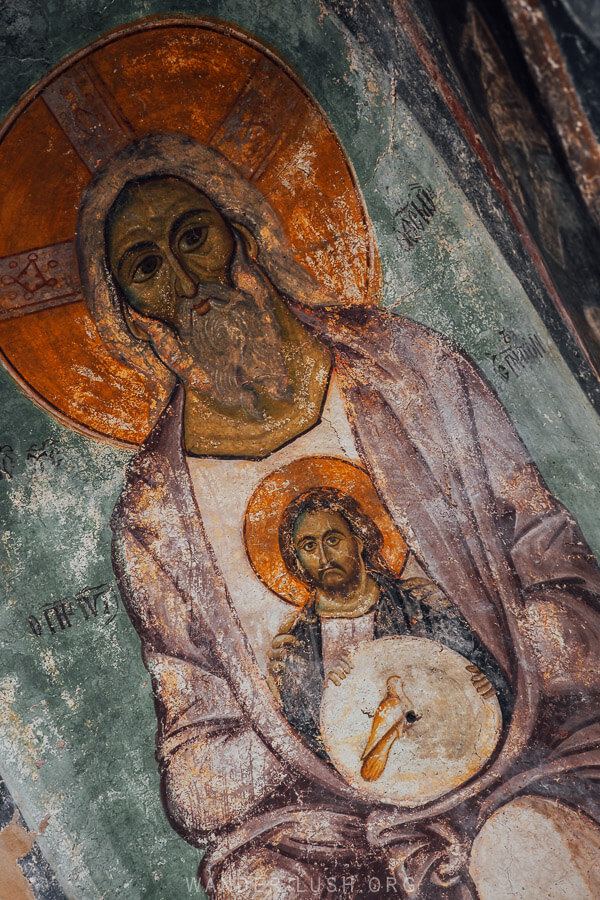
One of the most beautiful things about Kastoria’s churches is the fact that the entire community takes responsibility for them. These buildings are literally embedded deep within residential areas, and it is customary for one or more of the neighbouring households to play the role of caretaker.
If you go for an early morning wander in Kastoria you might encounter someone watering the church garden or sweeping out the narthex. If you’re lucky, they will open the door and let you have a look at the layers of fresco paintings that survive in situ.
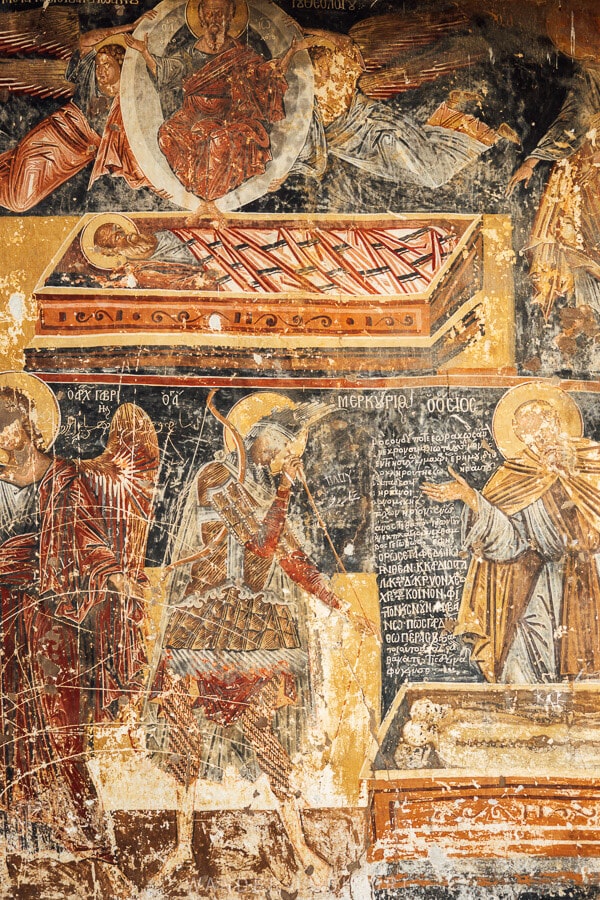
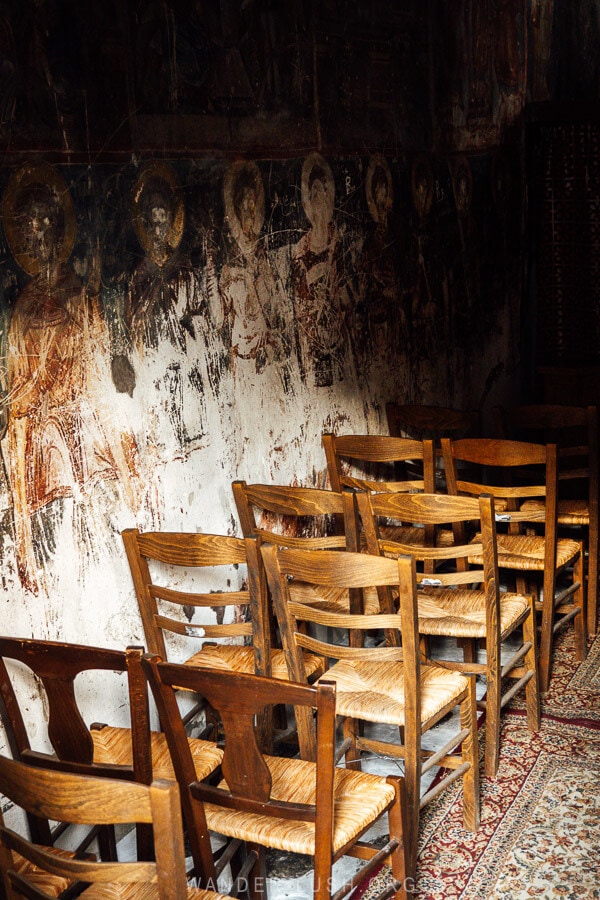
Another option is to go with a guide from the Byzantine Museum (see below for more details about the museum). We approached a staff member at the ticket desk and he very generously showed us three nearby churches, carrying a big set of keys to unlock each door with him.
The first church we saw was the 11th-century Holy Church of the Virgin Mary Koubelidiki. One of the most important religious sites in Kastoria, it is a symbol of the Macedonia region. The church stands amongst the remains of the old city walls and was originally created as a place for the soldiers who guarded the acropolis to pray. Inside, exceptionally rare frescoes depict the Holy Trinity.
Our second stop was the 12th-century Holy Church of Saint Nicholas of Kasnitzes. It is special because of its images of female saints, and the fact that the benefactor’s wife is depicted alongside her husband.
Our final stop was the Church of Avios Athanasios. As we were entering, a woman was busy cleaning and rushed ahead of us to straighten the chairs in the main chapel. It was quite endearing. An interesting feature of this church are the frescoes that show men in Venetian doge’s get-up.
6. Visit the excellent Byzantine Museum of Kastoria
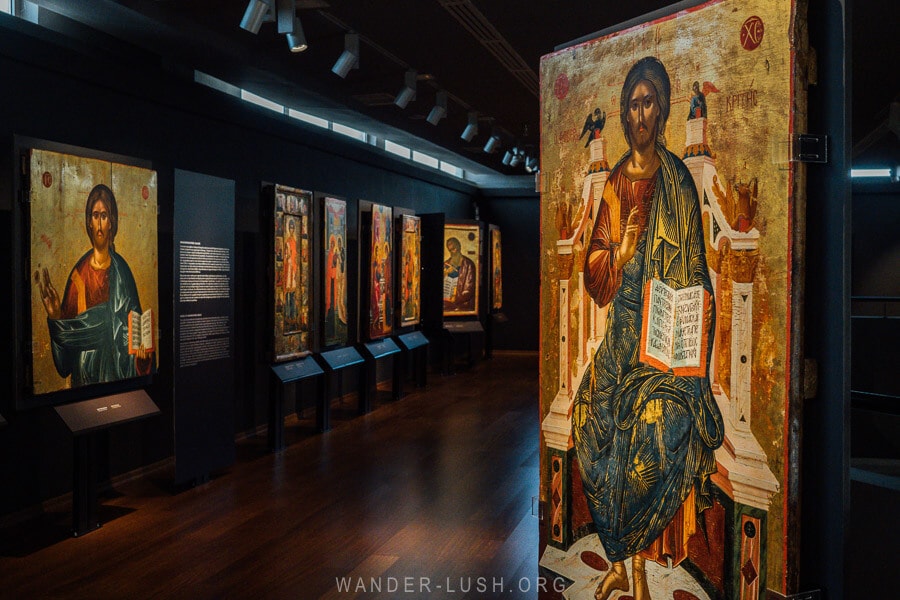
To see a selection of icon paintings and wooden iconostaseis collected from the churches in Kastoria, visit the Byzantine Museum. Similar to the National Museum of Medieval Art over the border in Korca, it holds an incredible collection of ecclesiastical objects that are even more impressive when viewed side by side and in their entirety.
Most objects date to the 12th, 13th and 14th centuries and have been expertly restored. The museum also holds a few younger works signed by Onufri, the famous Albanian iconographer who has his own museum in Berat.
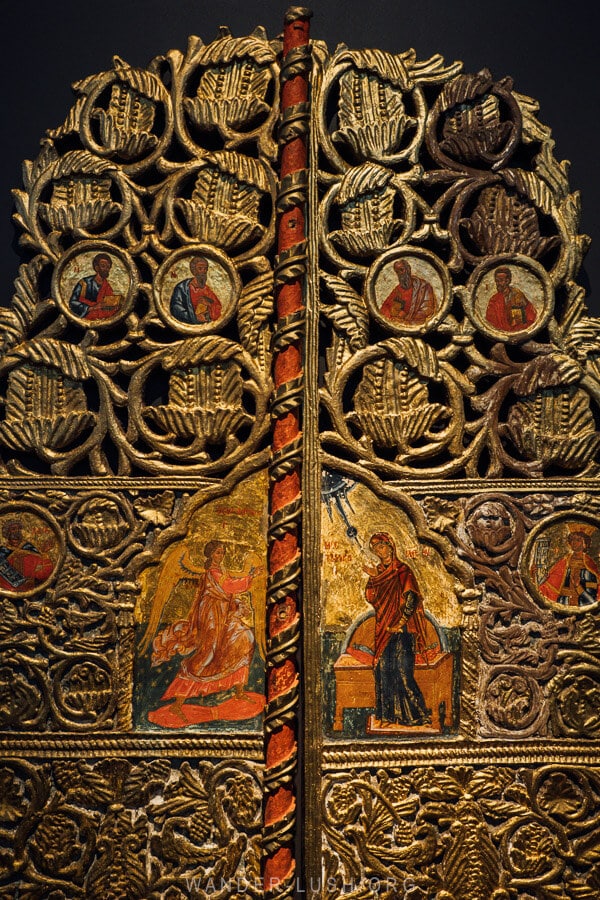
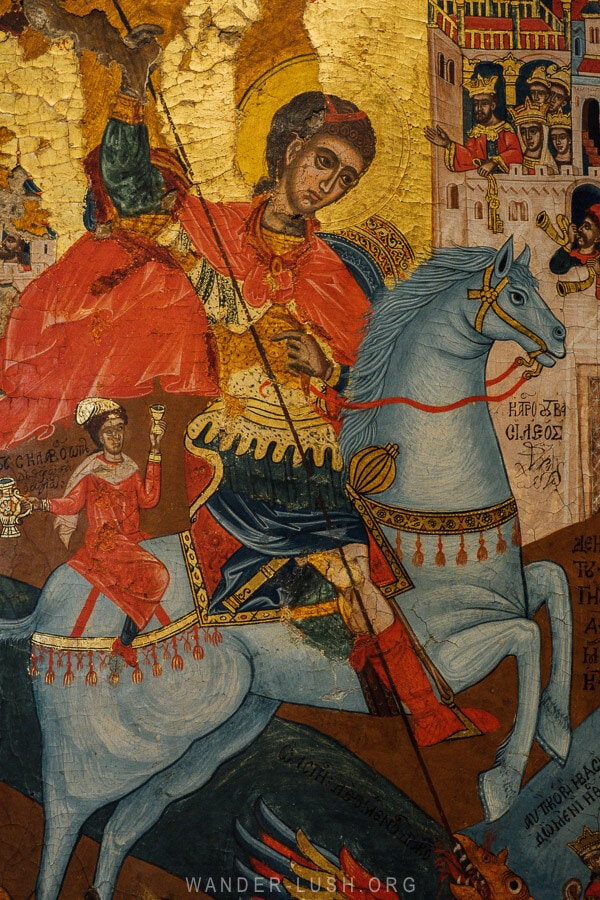
The museum is modern and very easy to navigate, with ample signage and information in English. Even if you’re not particularly interested in icons or religious art, you will still find the details about Kastoria, its past and its neighbourhoods very enlightening.
- Info: The Byzantine Museum of Kastoria is open from 8.30am to 3.30pm Wednesday to Monday (closed Tuesdays). Entrance costs 4 Euros per person.
7. Rent a bike & cycle around the peninsula
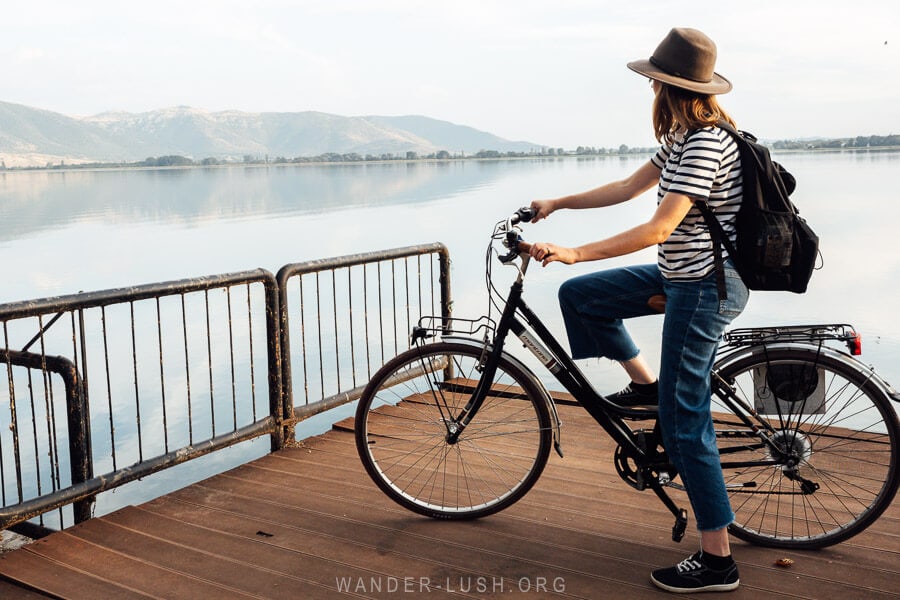
Kastoria’s gems are its mansions and churches, but let’s not forget that this city has a sublime natural setting. The mesh of red-roofed houses on the promontory is merely a bridge between the new part of the city on the mainland and an expansive green peninsula that reaches out into the lake.
Aside from a few monasteries and a scattering of restaurants, the three-pointed peninsula is mostly wild and forested. Marked hiking routes take you to look-out points in the hilly interior, while an 9-kilometre road that encircles the headland allows you to walk or cycle the whole way around the water’s edge.
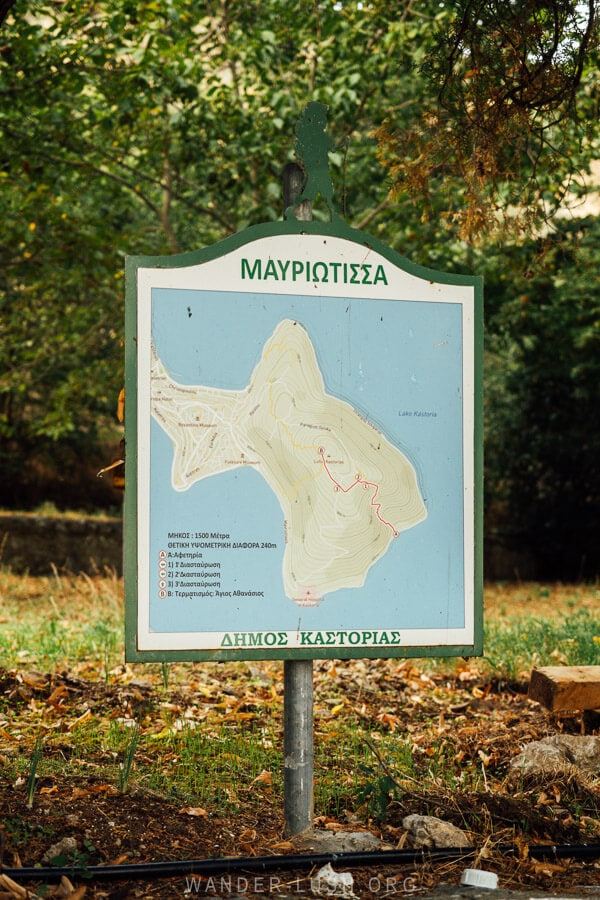
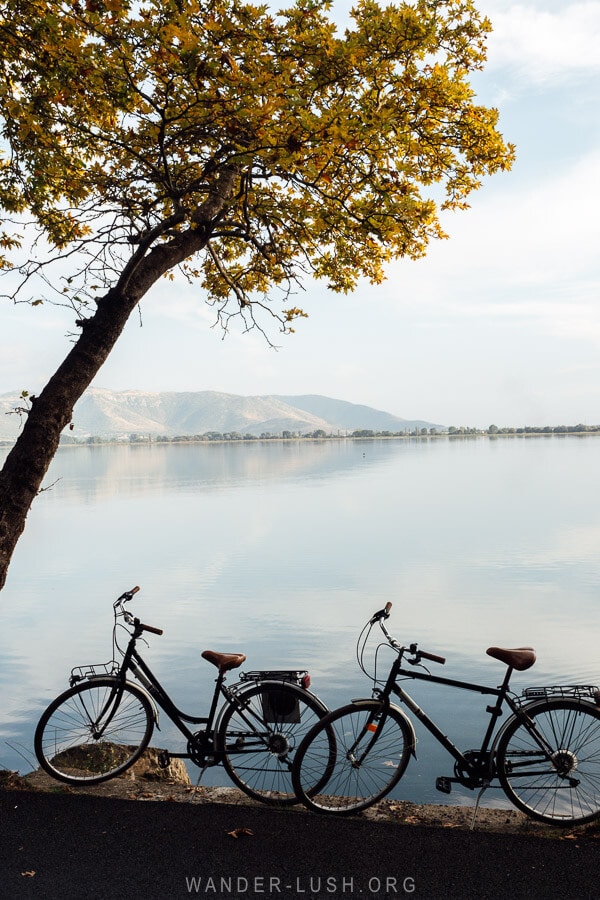
We rented bicycles and cycled from the southern side of the peninsula to the northern side. Despite being open to traffic, the road was pretty quiet and riding was easy and enjoyable. I recommend cycling in the same direction – you will be moving with the traffic, and the afternoon sun will mostly be behind you.
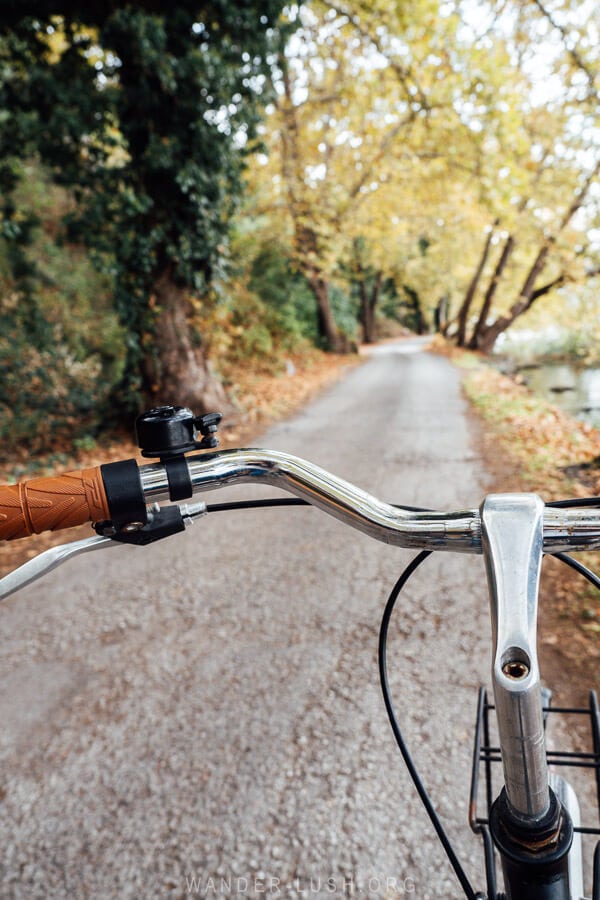
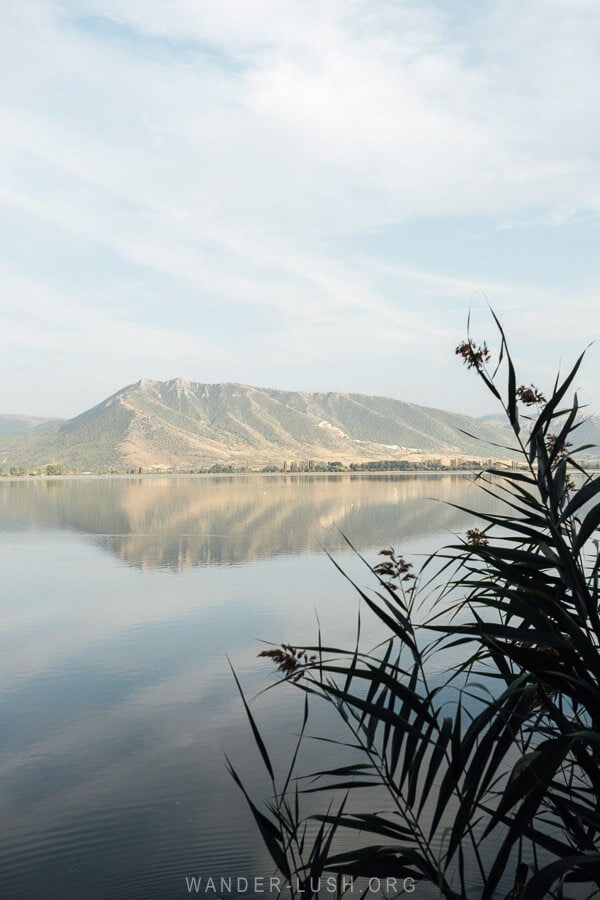
There are several points of interest to see along the way, including the Dragon’s Cave, a 300-metre cave filled with stalactites, and the Holy Monastery of the Virgin Mary Mavriotissa Monastery, a lovely waterfront complex with icons inside and a 900-year-old plane tree out front. Also keep a look out for the war shelters, rudimentary hiding places carved from the rocky wall.
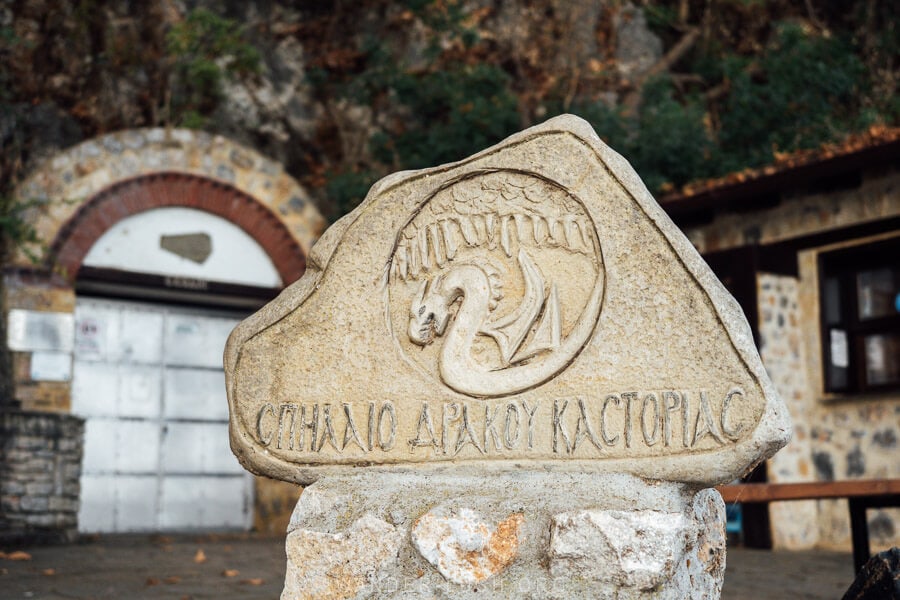
I recommend allowing 2 hours for the ride. We started at 5.20pm and returned our bikes just before 8pm. We would have been a lot faster had I not got a flat tire two-thirds of the way around the peninsula!
We could have called the bike shop for help, but we decided to walk the bikes back instead. It was fine until it came time to cross the narrow part of the promontory to get back to the shop… Carting bikes up and down steep stairs was less than ideal.
- Info: We hired our bikes from this shop. According to the owner, they are open from 10.30am until around 8pm every day. We paid 3.50 Euros for the first hour plus 1 Euro per hour for each bike.
8. Go for a sunset stroll around Lake Orestiada
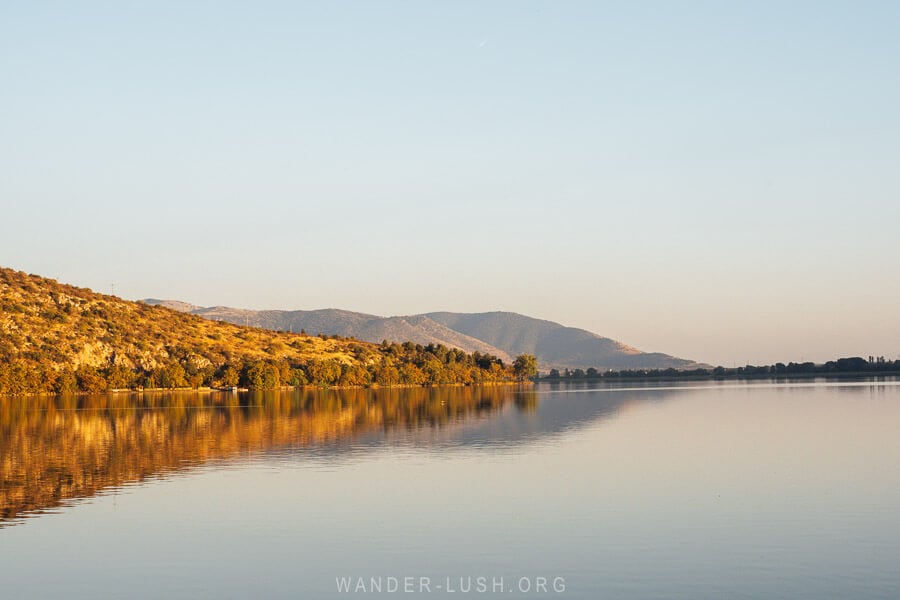
Another way to experience the romance of Kastoria’s lakeside landscape is to simply stroll around the water. The sections of peninsula that are built-up on either side have wide pedestrian paths.
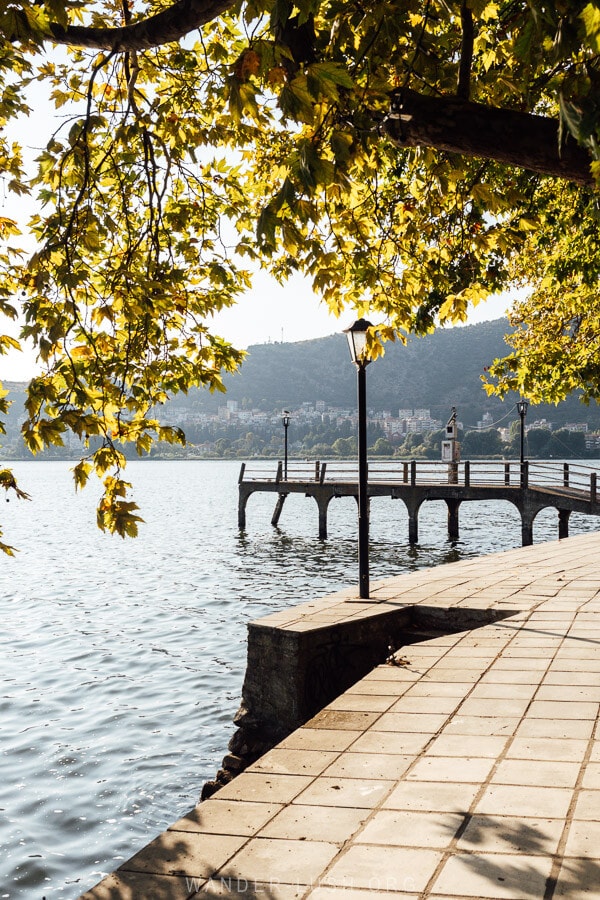
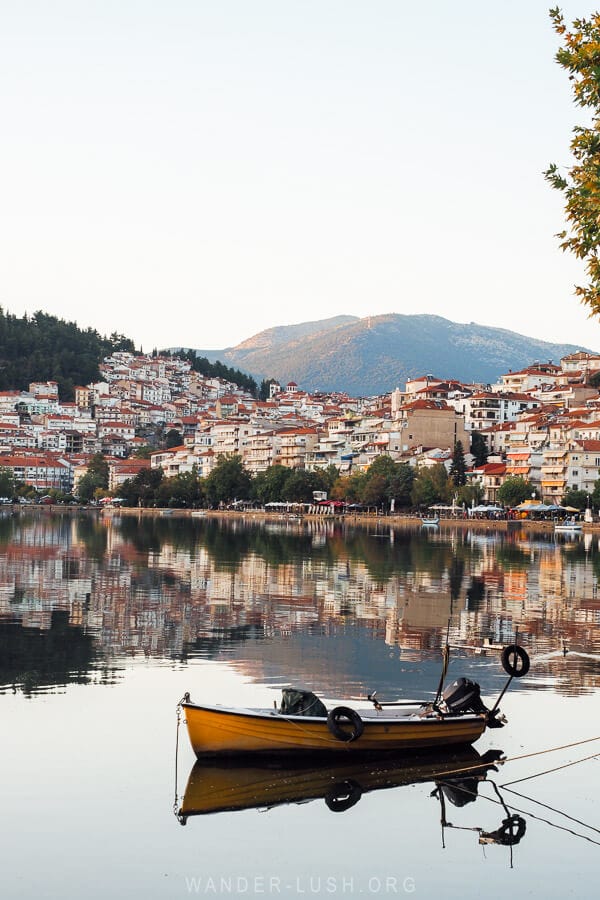
I especially enjoyed sunset on the southern side of the city, walking the route past Skoutaris Mansion and Papaterpou Mansion. There is a small jetty here, and you’ll likely see fishermen casting their lines into the water.
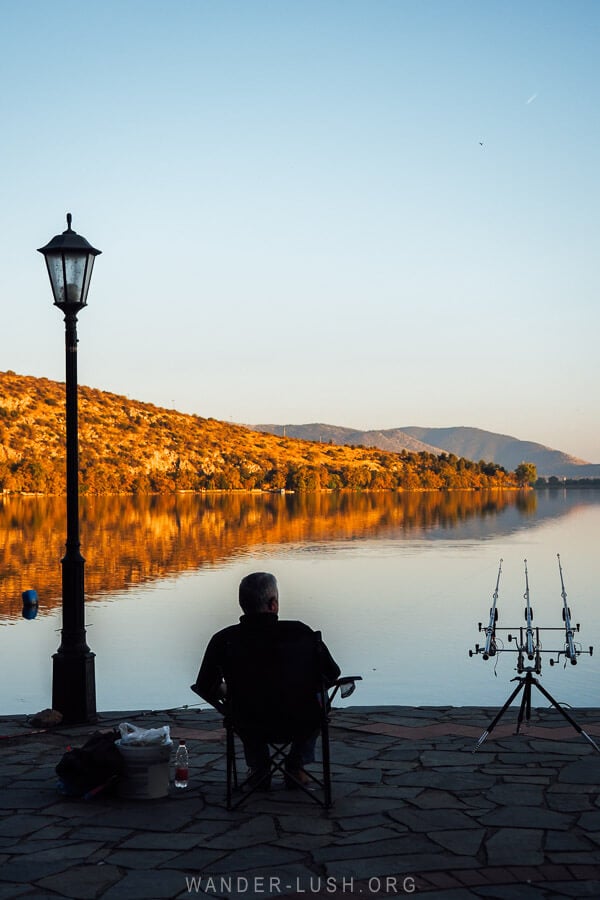
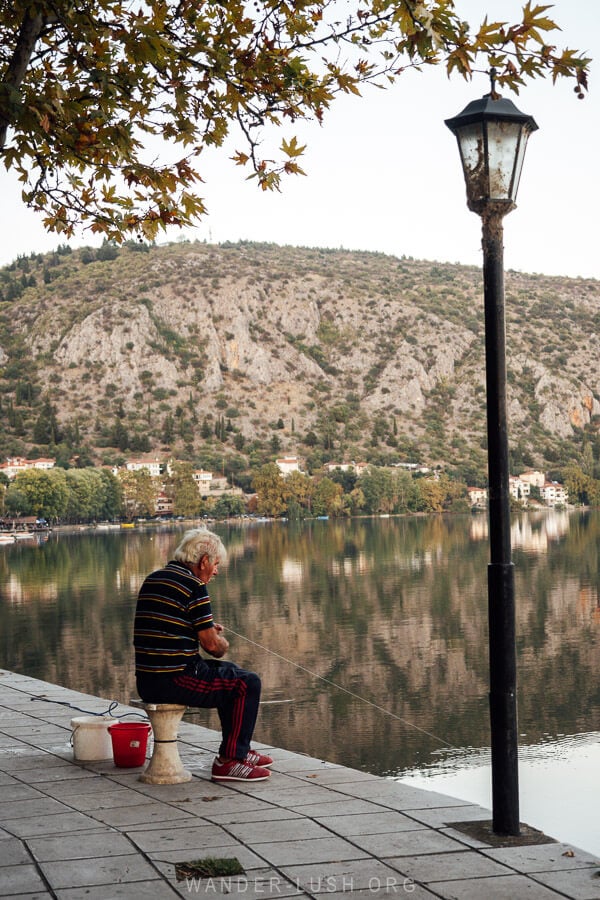
Finish with dinner at En Kairó, one of my favourite restaurants in Kastoria (more foodie recommendations in the next section).
9. Explore the new town
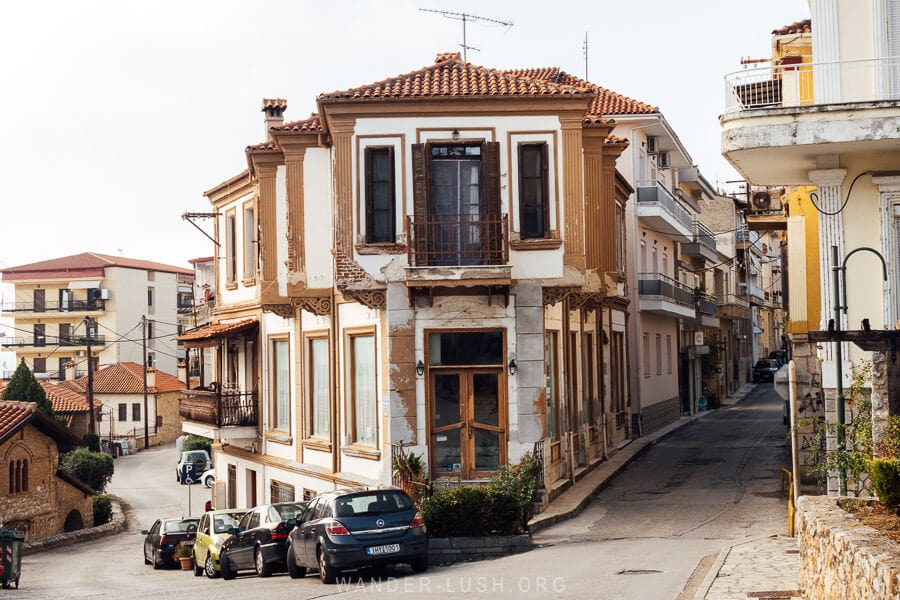
The newer part of Kastoria starts from the neck of the promontory and stretches along the southern lake edge. It is edgier and has a bit of a different vibe to the old quarters, with a more modern style of architecture that you will recognise from other Greek cities.
As a lover of old and dilapidated buildings, vintage shop signs and the like, I really enjoyed exploring Kastoria’s streets. Many of the shops and cafes are unfortunately abandoned and shuttered. But if you can look past that, you will notice some very interesting details.
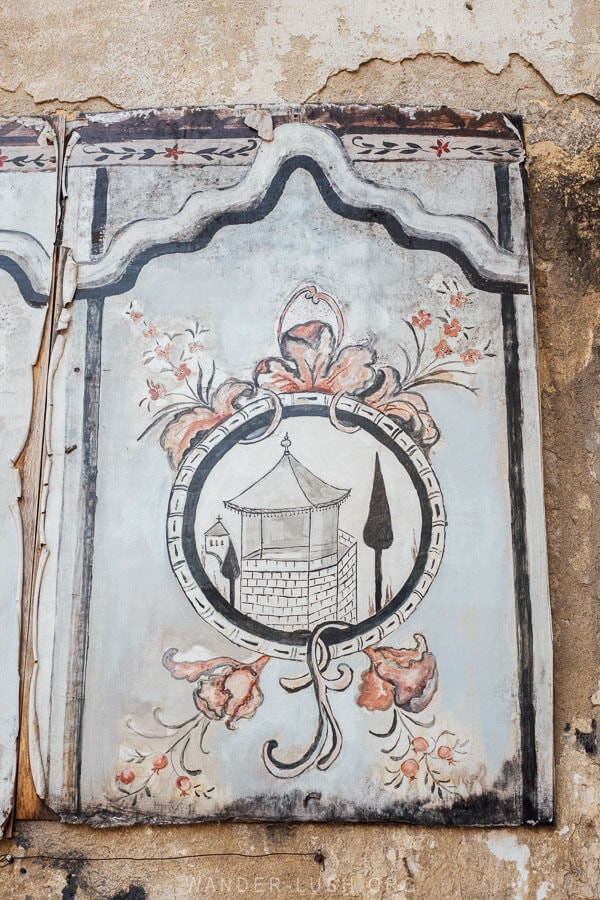
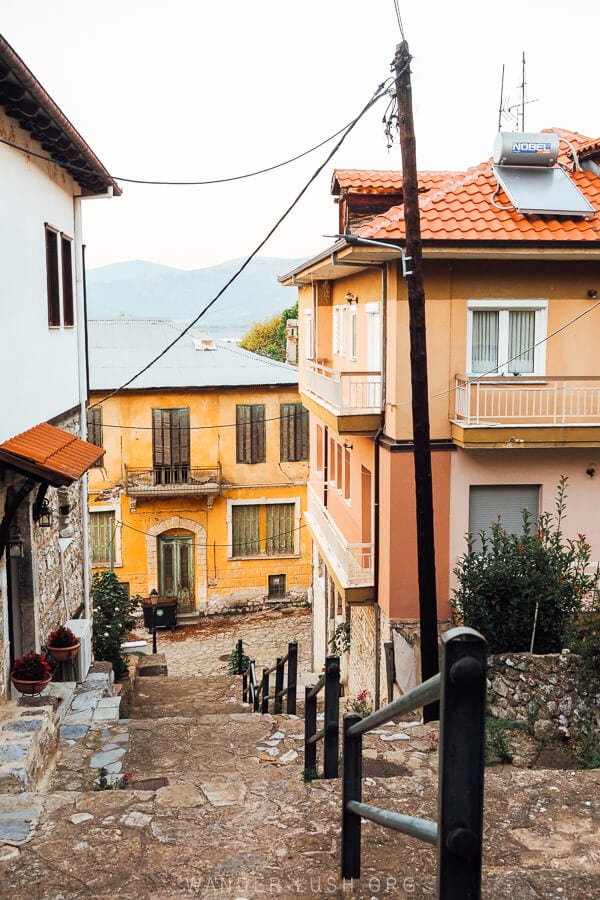
Ermou pedestrianised street and the surrounding lanes all have an interesting style. Two blocks west, The International Cafe occupies a handsome corner building. Venture inside and order an espresso for a very local Greek coffee house experience.
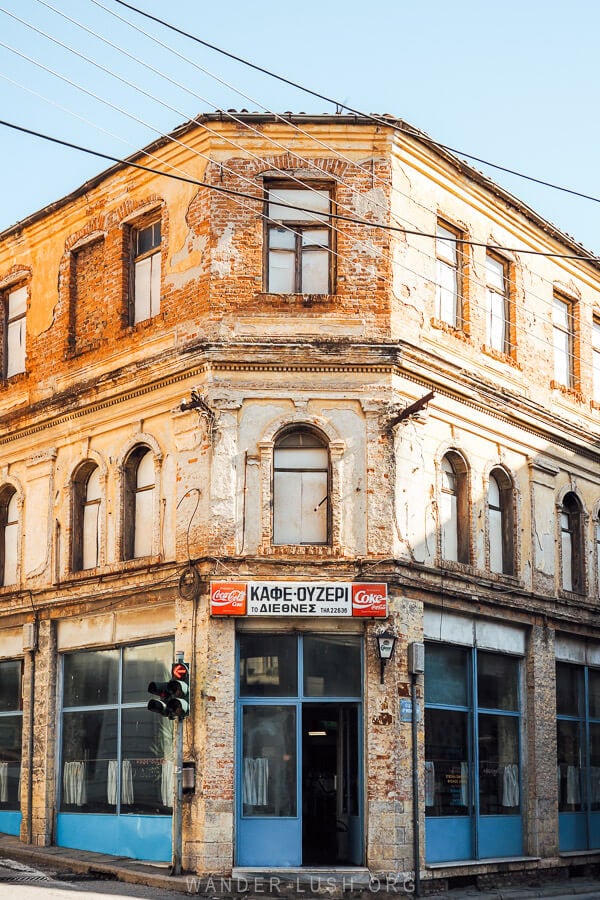
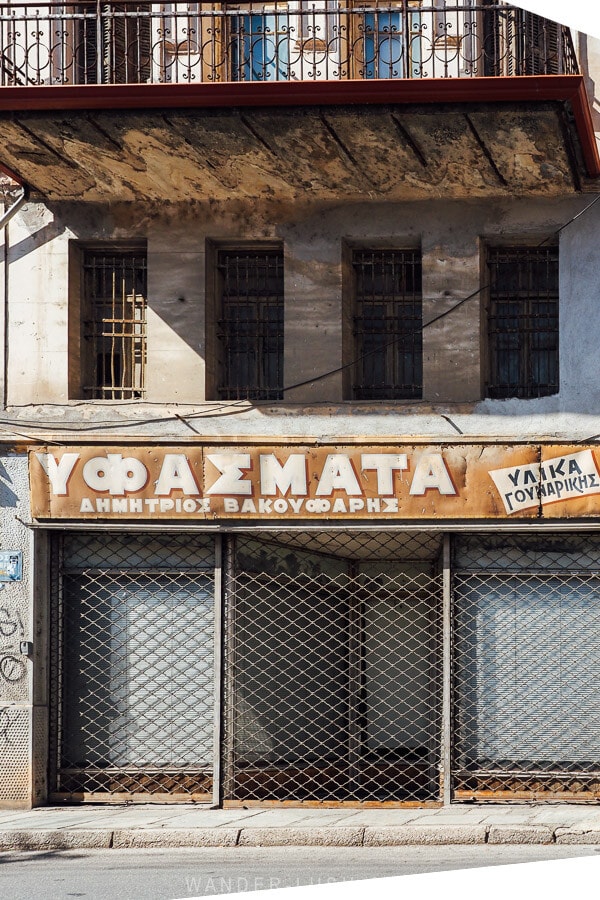
I say ‘new town’, but parts of this area are still very old, especially as you head back towards the promontory. Relics from the Ottoman period including the ruins of the Koursoum Mosque, the last mosque in Kastoria, can be found here, sandwiched between apartment blocks strung with laundry lines. At the time of our visit, the mosque was fenced off for restoration.
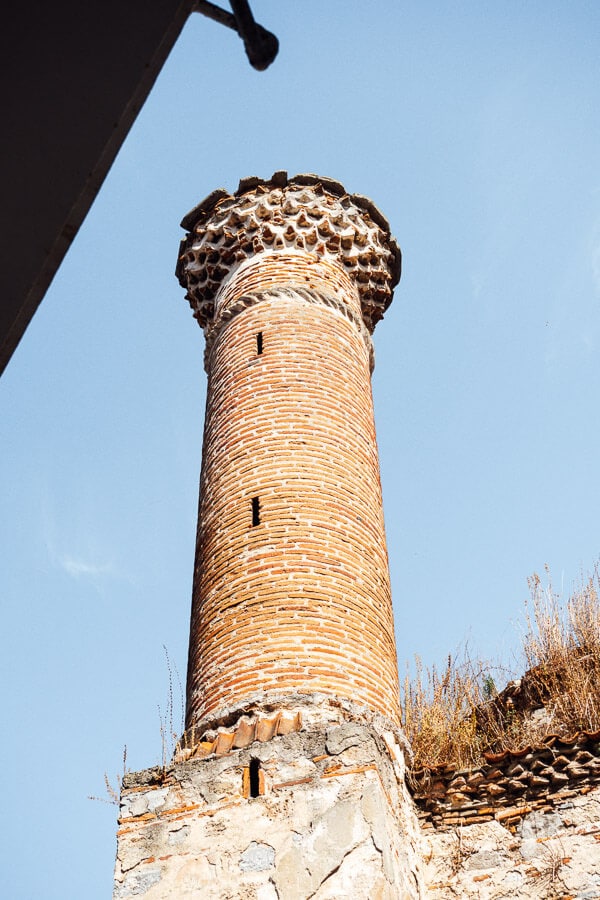
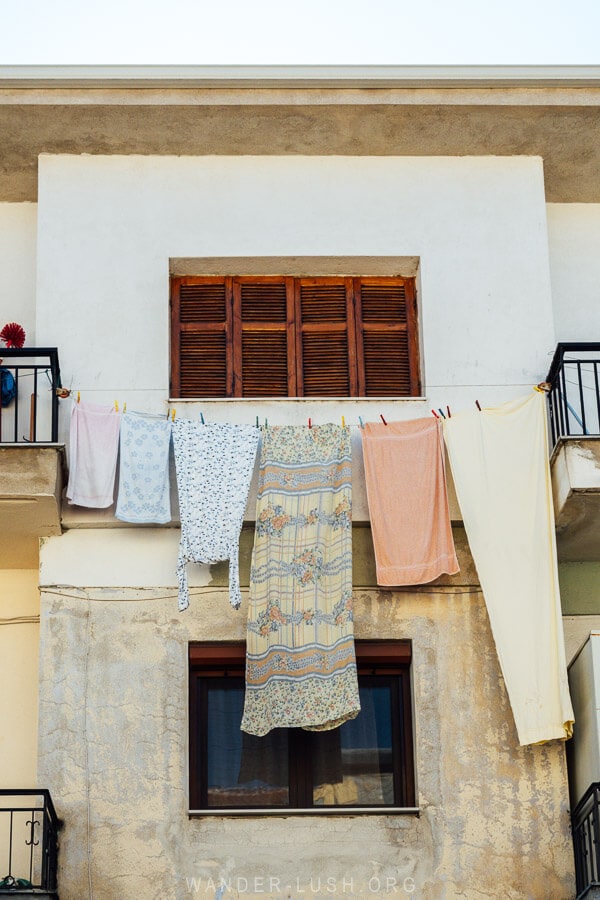
Close to the Athanasios Christopoulos Statue, the abandoned Kino cinema offers a nice city view from its flat rooftop. From there, follow the stairs down to the waterfront and head inland towards the Monument to the Macedonian Struggle Fighters and the retro Keletron Hotel.
10. Visit a furrier’s workshop
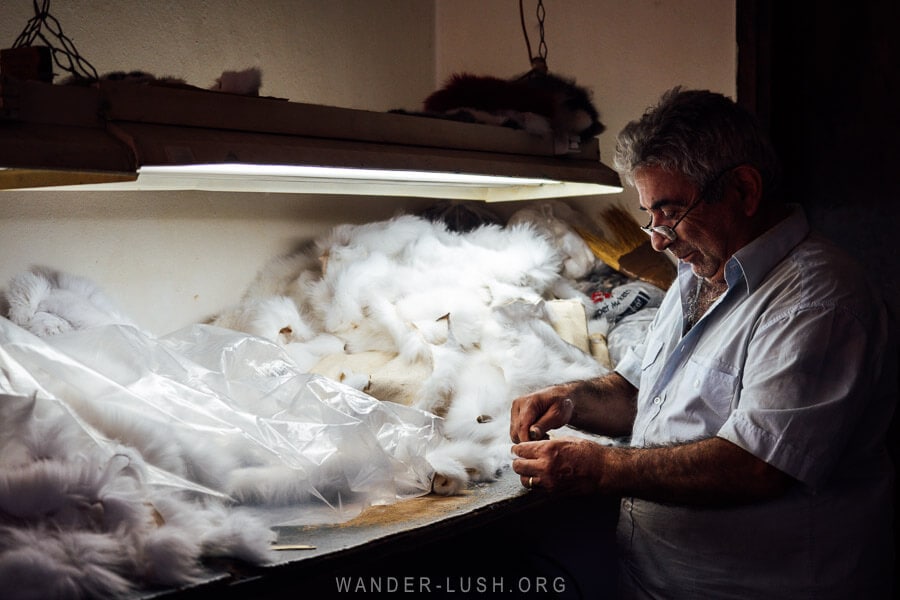
However you might feel about animal fur, there is no denying that the fur trade has been vital to shaping Kastoria into the place it is today. According to some sources, the name of the city derives from the Greek word for beaver, kástoras. (As you can imagine, the European beavers that once plied Lake Orestiada were sadly hunted to extinction.)
In the 14th century, the legendary furriers here supplied pelts for Byzantine courtiers. Generations later, their descendants relocated en masse to New York and formed the foundation of the fur industry there.
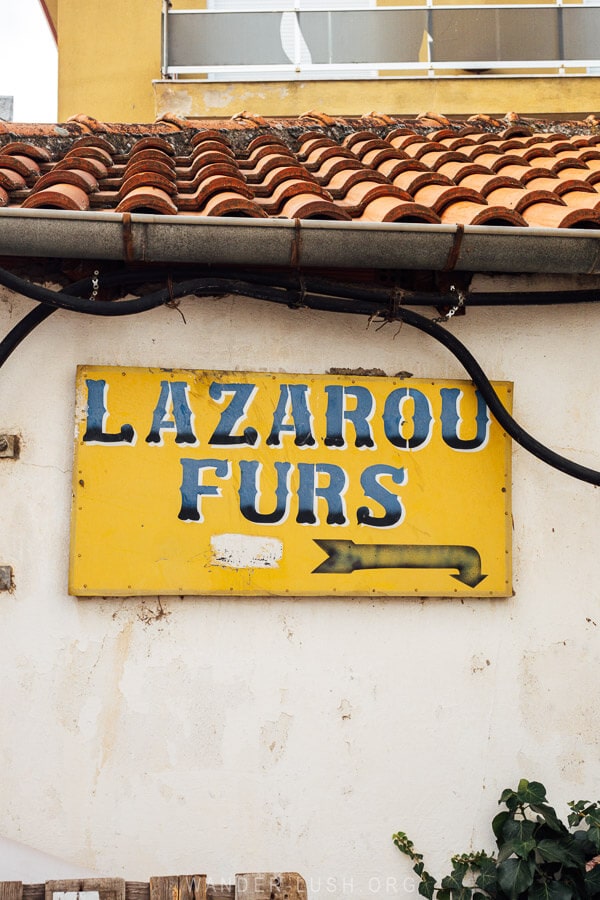
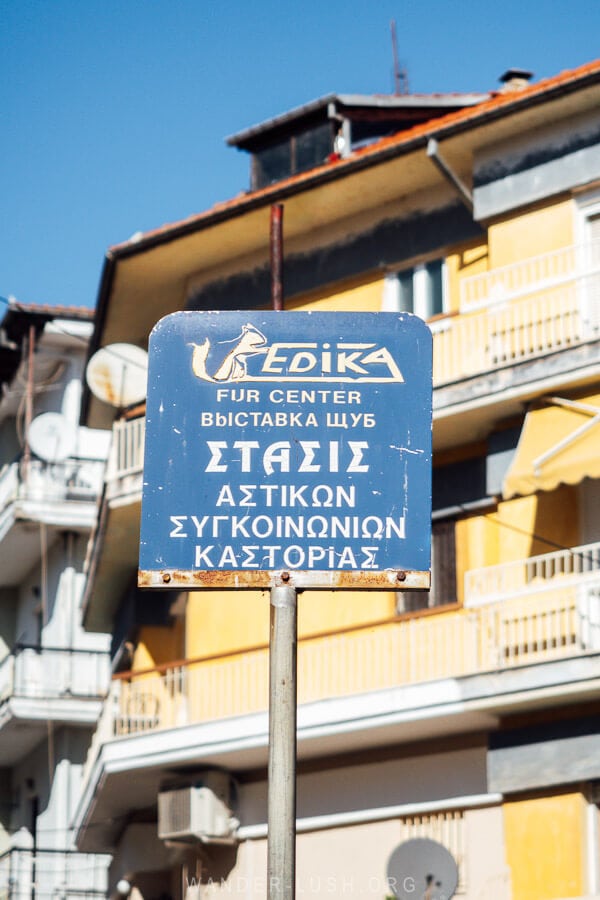
More than 300 fur dealers still operate in and around Kastoria. As you approach the city from Thessaloniki, you will see big factories on the side of the highway, and as you walk the streets, you will notice boards called stamatoures with fur pelts pinned to them to dry in the sun.
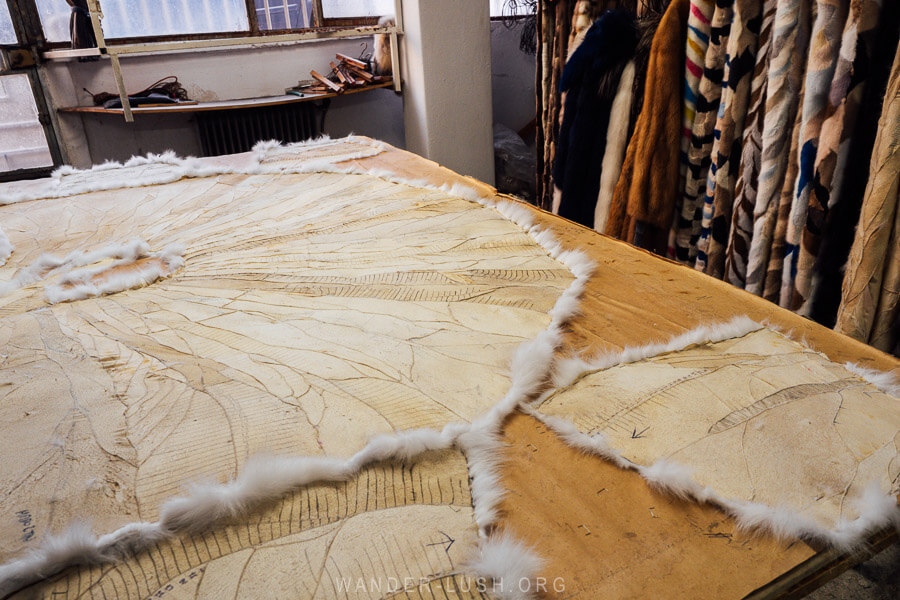
Aside from the factories that produce wearable fur on an industrial scale, there are family run operations that do everything by hand. Since the tradition is so long and important, I was eager to visit one.
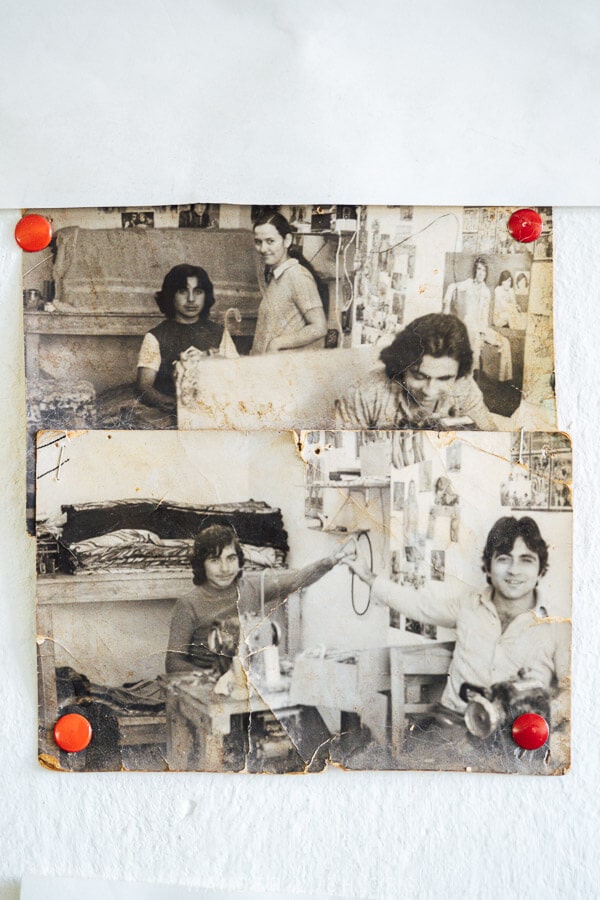
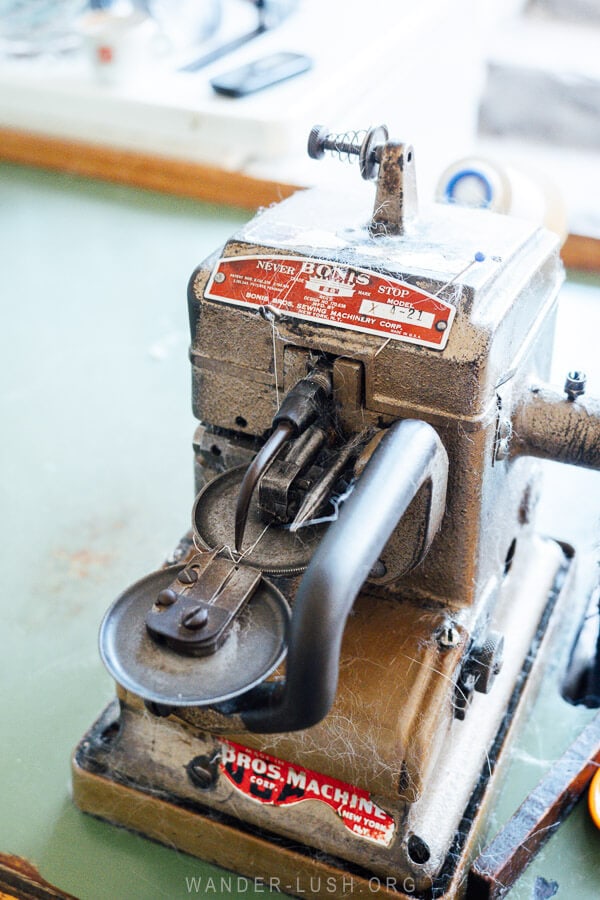
Christos (pictured above) welcomed me into his small workshop and allowed me to photograph him behind his workbench. He then took me on a little tour, showing me the pattern-cutting boards, fur stocks, and a small room packed to the rafters with finished coats. It was very interesting to see the old machinery at work.
11. Urbex at the old hotel, one of the best alternative things to do in Kastoria
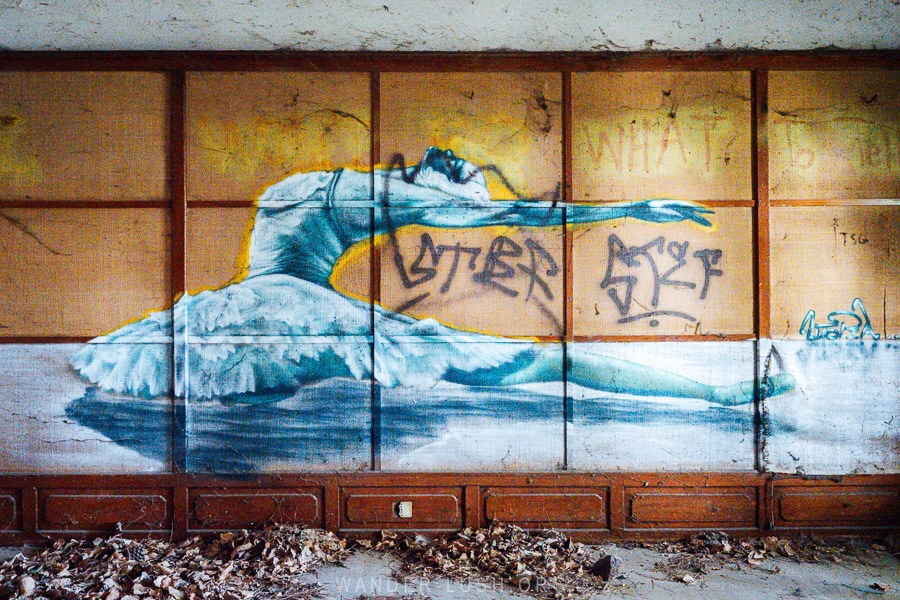
As we were making our way to the Byzantine Museum we noticed a big, dilapidated building that looked like an old hotel. It was completely deserted and unlocked, so we ventured inside for a look around.
On the first level, we found a big drawing room with wood panelling and a stone fireplace. On one of the walls, a giant ballerina mural materialised.
Behind the old reception desk there was a German signal machine. Rooms on the upper floors had been largely emptied of their furniture, but the old radiators and piping were still in place (something you never see in urbex places like Tskaltubo in Georgia, where abandoned buildings are routinely stripped of metal pipes and anything else of value).
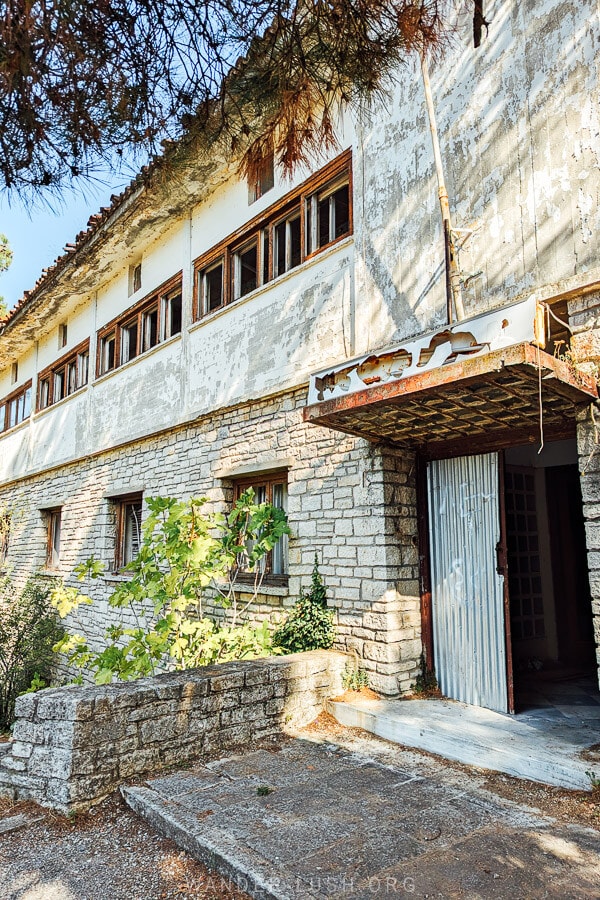
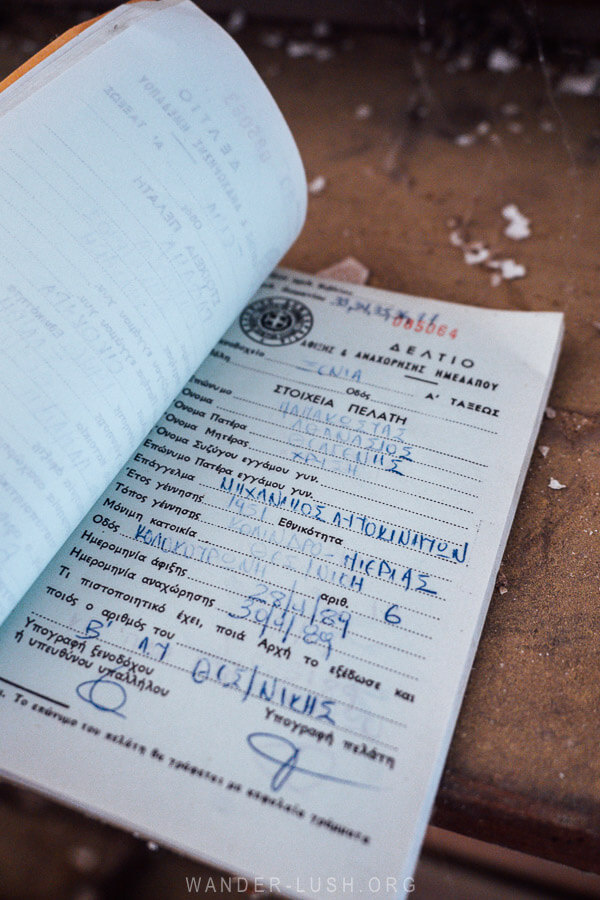
I used my phone to translate one of the old ledger books I found on the ground: It was titled ‘Hotel Chamber of Greece Executive’. The last recorded guest arrivals were in the 1990s, so I’m guessing the hotel closed some time after that.
12. Sip tsipouro at Cafe 108
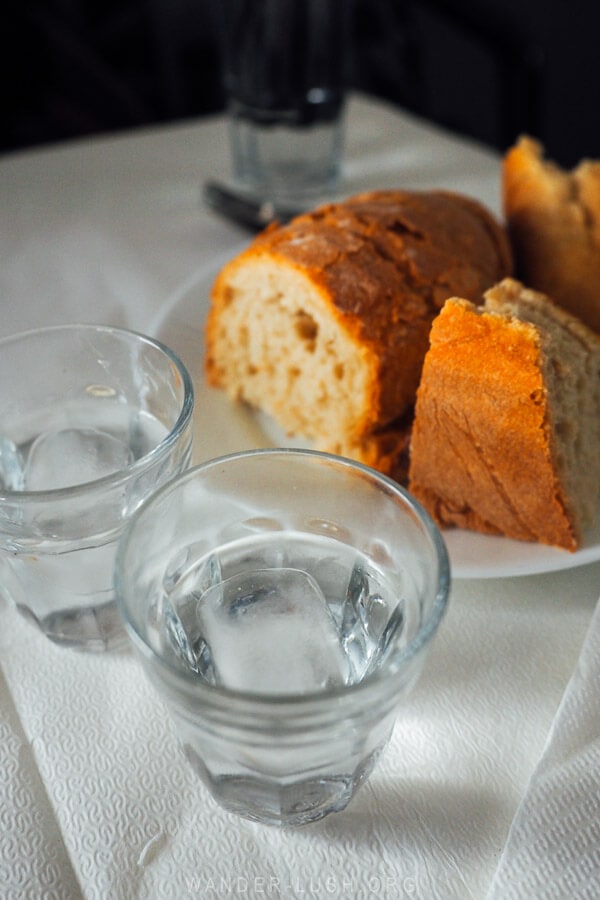
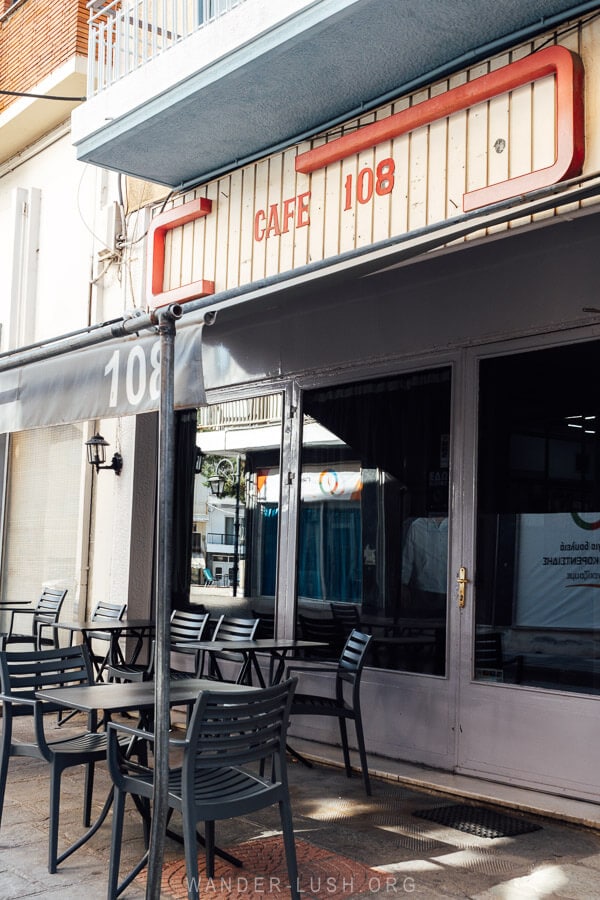
There are lots of excellent places to eat in Kastoria, but Cafe 108 deserves a special mention. It is as much about the local experience as the food and drink itself.
We were drawn to this place when we saw a few dozen older men sitting out front reading newspapers and sipping liquor at 10am on a weekday. The owner was chuffed to have two Australians as guests and promptly gave us two glasses of anise-scented tsipouro on the house.
We asked for a bite to eat and were served a huge spread of small plates – Greek salad, eggplant in tomato sauce, peppers, beans and liver – with a basket of crusty bread. Everything was simple, homemade, and supremely delicious.
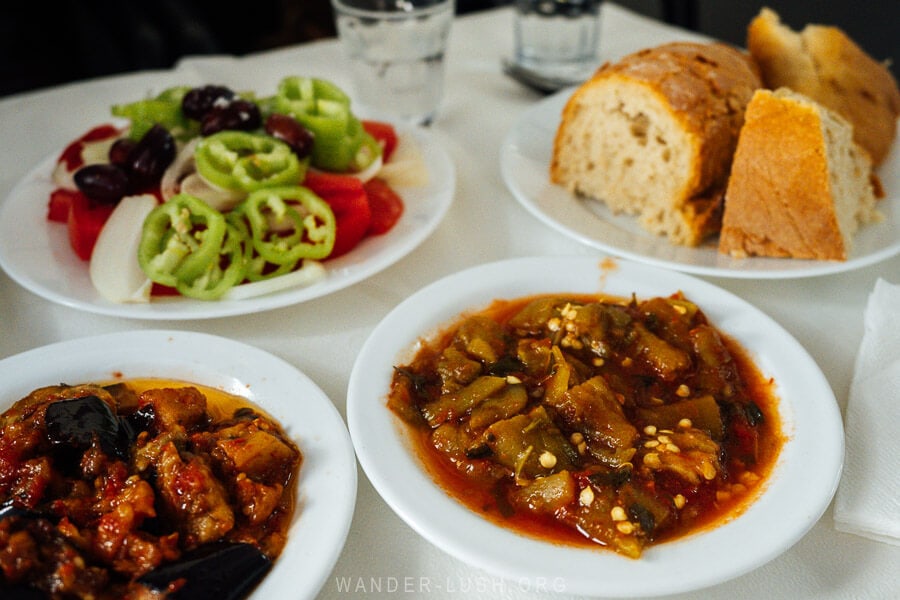
Cafe 108 is famous for hosting the Ragoutsaria after party. Kastoria’s annual Carnival is held in January over two days starting on Epiphany. The celebration transforms the city with colourful parades and big band performances. Judging by the photos on Cafe 108’s wall, it gets pretty rowdy!
Where to eat in Kastoria: Best Kastoria restaurants for traditional Greek food
En Kairó
This small plate restaurant has a beautiful setting right on the waterfront and an interesting menu. We especially loved the savoury donuts and the beetroot salad.
Old Town
We ate dinner here on our second night and really enjoyed it. The restaurant was quieter than other venues on the waterfront, but the food was incredible and the service friendly. We especially liked the dolmades and the baked feta with honey.
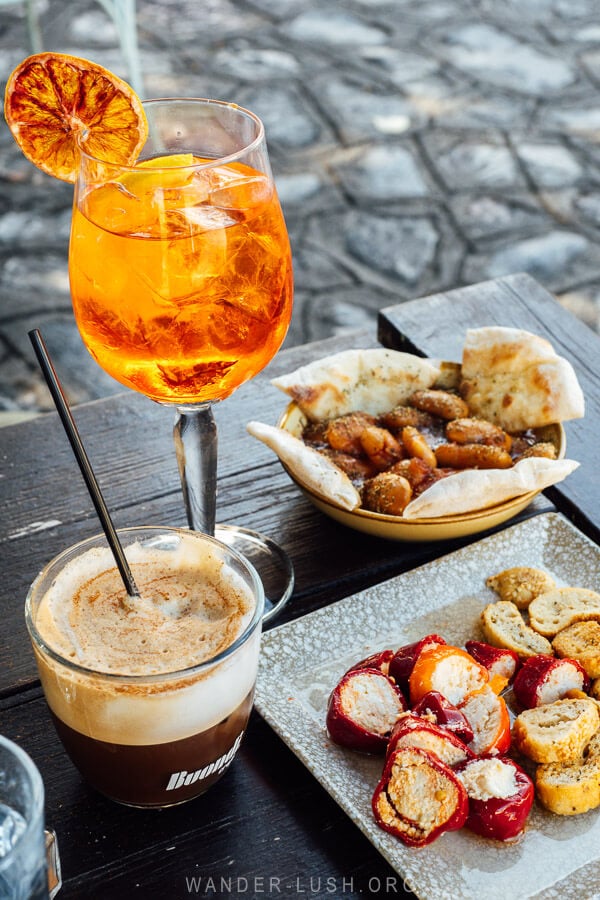
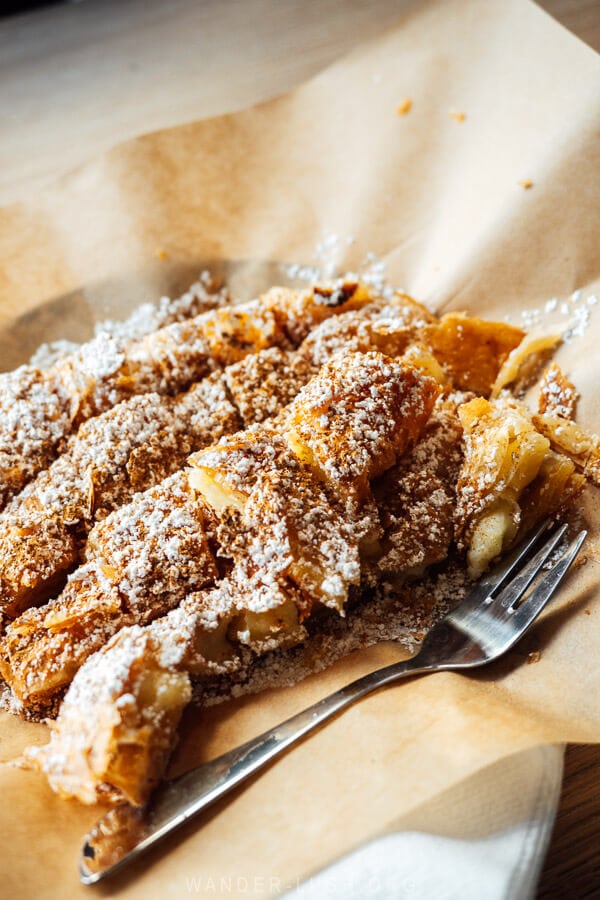
Idees
This cafe-restaurant-bar has a great location overlooking the historic houses on Emmanuel Brothers Square. We had cocktails and a small bite to eat here when we first arrived in Kastoria (pictured above left). There are several local specialties on the menu, including Kastoria cheese and dishes prepared with white beans. Pop inside to browse the cute souvenir shop.
Lefteris Kastoria Kebabs
The best gyros we ate in Kastoria. There is no seating inside the shop, so I recommend taking your kebab out to the waterfront gazebo. Just be wary of the geese who will definitely try to get in on the action.
Booogátsa
Deliciously flaky bougatsa (pictured above right) prepared by a young Kastoria entrepreneur who recently returned home after years working in Thessaloniki.
Where to go next: Onward travel from Kastoria
There is no railway station in Kastoria, so if your next stop is within Greece, bus is the only affordable option. KTEL Makedonia runs daily coaches Thessaloniki, Ioannina, Kozani and other cities in the north, plus Athens.
You can find online schedules here on the KTEL Kastoria website.
Our next destination was the Albanian city of Korca, just an hour’s drive from Kastoria. We inquired about buses that could take us to the border or all the way into Albania, but they do not exist.
We asked a few locals – the lovely guys at Booogátsa even called their driver-friend for us – and figured out that 100 Euros is the going rate for a taxi from Kastoria to Korca.
Staff at Hotel Keletron told us a taxi to the border would be 40-45 Euros. We weren’t in a rush, so we figured we would save some money by taking a taxi to the border, crossing by foot, then picking up a (more affordable) driver on the Albanian side.
We found a friendly taxi driver at this taxi stand by the bus station and he immediately quoted us 40 Euros to travel to the border. After a bonus detour to a lookout point outside the city, he told us he could take us all the way to Korca for a total of 80 Euros. We agreed.
Like the road crossing from North Macedonia to Greece that we did back in 2019, entering Albania from Greece was very easy. The road is excellent, and we didn’t have to get out of the car for immigration. The whole process took less than 15 minutes.
When we arrived in Korca an hour later, our hotel informed us that a taxi from the Albanian side of the border to the city centre costs around 20-30 Euros. If you want to save a few Euros, it is cheaper to change drivers at the halfway point.
You might find one or more of these guides helpful for your onward travels:



